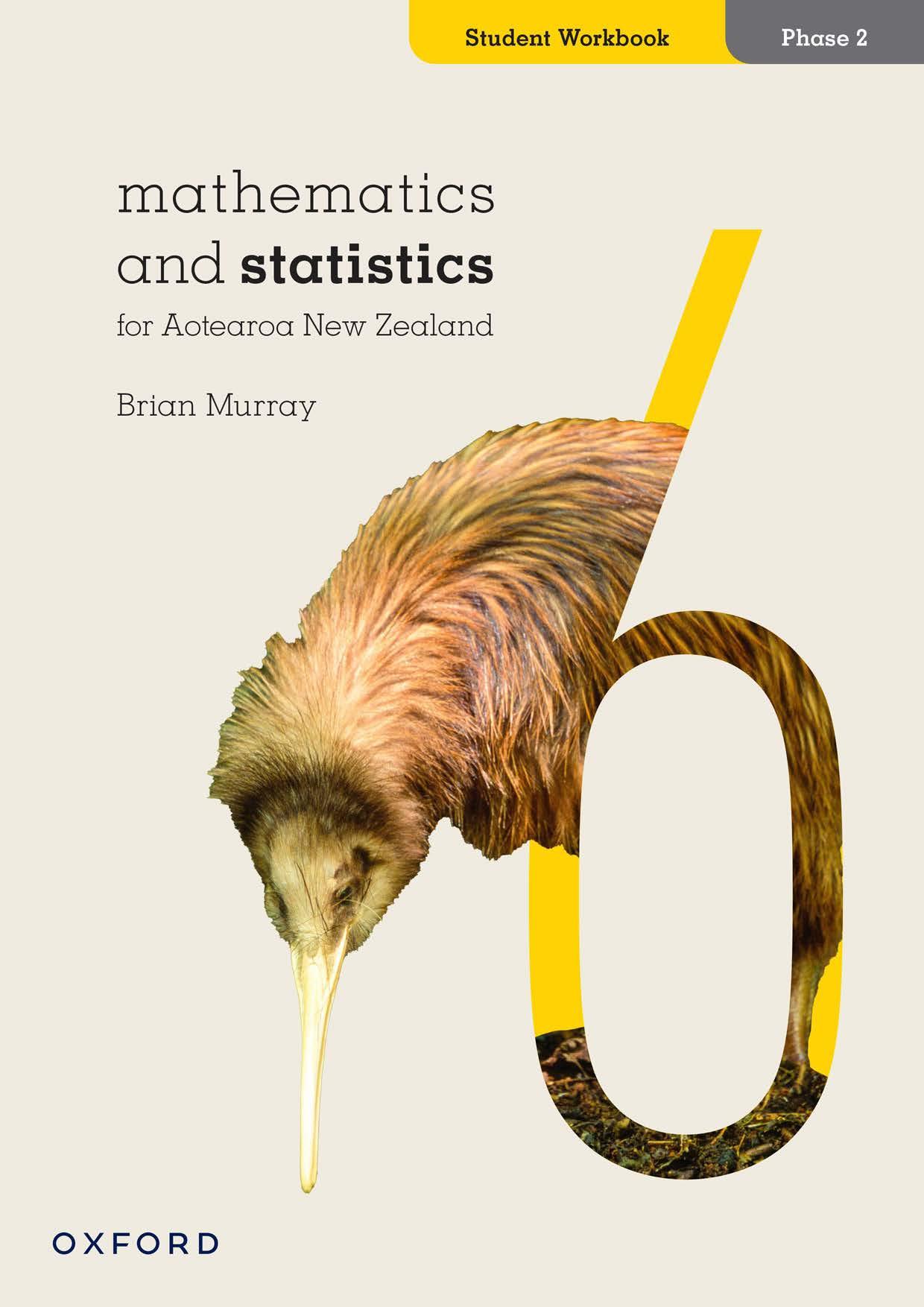

mathematics and statistics for Aotearoa New Zealand
Unit 1: Topic 1
Place value
In a number, the value of each digit depends on its position, or place.
923856 is easier to read if we write it as 923 856. It also makes it easier to say the number: nine hundred and twenty-three thousand, eight hundred and fifty-six

Guided practice
1 Look at this number: 725 384. The 7 is worth 700 000. Show the value of the other digits on the place value grid.
2 If we write thirty-two thousand, five hundred and nine in numerals, we use a zero to show there are no tens: 32 50 9
Write as digits:
a nine thousand, three hundred and seven
b twenty-five thousand and forty-six
c one hundred and two thousand, seven hundred and one
3 Write in words: a 2860 b 13 465 c 28 705
Remember to use a zero as a space filler.
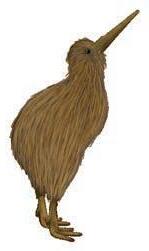
Independent practice
1 What is the value of the red digit in each number?
e.g. 8 5 306: 80 000
b 4 8 005:
d 135 284: a 5 3 207: c 2 9 425: e 2 3 99 517:
2 Write each number from question 1 in words.
e.g. 85 306: eighty-five thousand, three hundred and six
3 Write these numbers as numerals.
a eighty-six thousand, two hundred and thirty-one
FINAL
b one hundred and forty-two thousand
c six hundred and fifty-six thousand, three hundred and eight
d four million, one hundred and five thousand, nine hundred and twenty-one
4 Circle the number that is one more than 25 789.
25 800 25 780 25 799 25 790
5 Look at this number: 4 785 321. Show the value of each digit on the place value grid.
Write the number using gaps if necessary
6 Write these numbers in words.
a 2 58 3 942
b 6 054 431
7 Write these numbers as digits.
a five million, four hundred and eighty-seven thousand and two hundred and four
8
9 Expand these numbers.
Extended practice
e.g. 14 217: 10 000 + 4000 + 200 + 10 + 7
a 25 123: 20 000 +
b 6 563 382:
c 6004:
d 125 381:
e 860 094:
10 Use the digits on the cards to make:
Remember to use spaces between the digits where necessary. 6 1 5 3 9 7
a the largest number using all the cards.
b the smallest number if “5” is in the ones place.
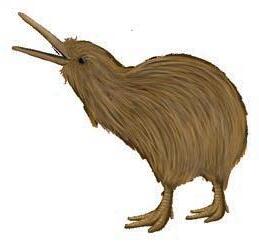
c the largest number if the “7” is in the hundreds of thousands place.
d the smallest number if the “1” is in the thousands place.
11 Shade the triangle that is at the approximate position of the number shown for each number line.
a 3427
010002000
b 41 132
010 00020 000
c 98 775
050 000
Rounding numbers
When rounding numbers to the nearest 1000, you check the number in the hundreds. When rounding numbers to the nearest 10 000, you check the number in the thousands. Always check the number one place value below the number you’re rounding.
Let’s round 345 329 to the nearest thousand.
12
We check the number in the hundreds, which is 3. So, we round down.
The answer is 345 000.
This is the number you check to determine if you round up or down.
14 A factory makes roughly 5000 cars in one day (rounded to the closest thousand). Using the numbers below, list three possible numbers that could be the actual number of toy cars produced at this factory. 1, 5, 6, 4, 7, 2
Extended practice
1 This table shows unusual record-breaking activities.
USA Number of dogs on a dog walk together
Spain People salsa dancing together
Poland People ringing bells together
Hong Kong People playing percussion instruments together
Singapore People line dancing together
Portugal People making a human advertising sign
Mexico People doing aerobics at the same time
India Trees planted by a group in one day
USA People in a conga line
England The longest scarf ever knitted (in centimetres)
Complete the number column in the table by rewriting the numbers below in order, from the lowest to the highest number. The events are in order from low to high.
2 The following numbers are from the list in question 1. They have been rounded in various ways. Write the actual number for each.
3 Rounded to the nearest ten thousand, the 2024 population of New Plymouth in the North Island was 50 000 people. The actual number can be made by using each of these digits once: 1 4 6 8
List as many of the 18 numbers that could be the actual population as you can.
Unit 2: Topic 1 Addition mental methods
Finding a short cut
Imagine you were on a TV quiz show and had four seconds to answer the question. There are several methods you could use to come up with the right answer. However, in only four seconds you would probably have to use a mental method.
Guided practice
1 You could use the near-doubles method for 252 + 250: Double 250 is 500. Then add 2 to equal 502. Fill in the gaps.
e.g. 252 + 250250 + 250 = 500
a 150 + 160150 + 150 = add 10 more
b 126 + 126 125 +
c 1400 + 1450
For $100: What is the sum of 252 and 250? Or 252 + 250?
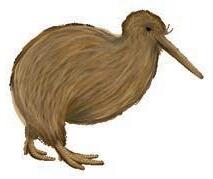
2 You could split the numbers. For example, 252 + 250 is the same as: 200 + 50 + 2 + 200 + 50. Fill in the gaps.
c 1250 + 2347
3 You could use the jump method on an empty number line: 50 + 50+ 2 100102
e.g. What is 50 + 52?
Answer: 50 + 52 = 102 a What is 105 + 84?
Answer: 105 + 84 =
b What is 1158 + 130?
A nswer: 1158 + 130 = c What is 2424 + 505?
Independent practice
1 Another mental method is compensation. It uses rounding. For 74 + 19, we can round 19 to 20 and say 74 + 20. Use the compensation method to solve these.
Problem Using rounding it becomes: Now I need to: Answer
e.g. 74 + 1974 + 20 = 94 take away 1 93
a 56 + 4156 + 40 = 96 add 1
b 25 + 6925 + 70 = 95 take away 1
c 125 + 62125 + 60 = 185 add
d 136 + 198 136 +
e 195 + 249
f 1238 + 501
g 1645 + 1998
2 Use the compensation method to solve these.
a 35 + 9 9
c 173 + 198
e 1451 + 1499
FINAL
b 24 + 101
d 1407 + 1002
f 1562 + 1004
3 Use the jump method to find the sum of each pair of numbers.
a 125 + 38 =
b 164 + 47 =
c 1193 + 842 =
d 2585 + 1321 =
4
Practise the split method with these addition problems.
e.g. 125 + 132
a 173 + 125
b 1240 + 2130
c 5125 + 1234
d 7114 + 2365
e 2564 + 4236
5 Use your choice of method to find the answer. Be ready to explain the method you used.
a 713 + 190 =
b 1490 + 1490 =
c 2009 + 2009 + 2009 =
d 1864 + 3134 =
e 2499 + 1002 =
f 1236 + 247 =
g 2499 + 2499 =
h 3130 + 2360 =
Extended practice
Improving your estimating and rounding skills can help you save time with mental calculations.
1 Look at these facts and figures. Show how you would round the numbers by underlining or highlighting one of the numbers.
World fact
Metres Rounded number
a Krubera: the deepest cave in the world 2191 m 2100 or 2200?
b Cehi: the tenth-deepest cave in the world 1502 m 1500 or 1600?
c Mont Blanc: the highest mountain in Europe 4807 m 4800 or 4900?
d Mont Maudit: the tenth-highest mountain in Europe 4466 m4400 or 4500?
e Mt Everest: the highest mountain in the world 8850 m8800 or 8900?
f Aoraki/Mount Cook, the highest mountain in NZ 3754 m 3700 or 3800?
g Mammoth Cave: the longest cave in the world 590 600 m 500 000 or 600 000?
h Wind Cave: the fourth-longest cave in the world 212 500 m 200 000 or 300 000?
2 Circle the number that will make the information correct.
a The total of the depths of Krubera and Cehi caves is about 3500 m, 370 0 m, 3600 m, 3400 m.
b Mont Blanc is about 20 m, 20 0 m, 30 m, 300 m taller than Mont Maudit.
c If you walked the lengths of the Mammoth Cave and the Wind Cave, you would have travelled about 700 km, 70 km, 80 km, 80 0 km
3 Sarah goes shopping in a bargain shop. She has $11 to spend. She goes to the checkout with these items:
Paint set: $1.99 Ball: 99c Calculator: $1.99 Cuddly toy: $1.99 Pen set: $1.25 Notebook: 49c Geometry set: $1.99 Stickers: $1.29
a To the nearest dollar, how much more than $11 is the total?
b Which item should Sarah put back to be closest to a total of $11?
Unit 2: Topic 2
One of the most common written methods for addition is to set the numbers out vertically. You start with the ones and add each column in turn.
Sometimes you need to regroup from one column to the next.
Guided practice
1 Complete the following.
2 Complete the following. You need to regroup with these. 3 Start with the ones and add each column in turn.

Independent practice
1 Look for a pattern in the answers.
2 Look for linking numbers to save time in written addition.
3 On a holiday, Jack spent $295 on food, $207 on travel, $985 for his hotel, $92 on presents and $213 on entertainment. He wanted to know how much he had spent and used a calculator and found that the total was $1612.
a If you round the numbers, is Jack’s answer reasonable?
b How much did Jack spend altogether?
4
When you write an addition problem vertically, it is important to keep the digits in the correct columns. If you don’t, you will get the wrong answer.
Rewrite these problems vertically, then solve them.
Extended practice
1 Find four different solutions to make this addition correct.
2 A football team can have more than 200 000 spectators at their home games in a season. Here is some information about one famous football team.
• Number of home games: 12.
• Total number of spectators: 212 052.
• Average attendance per home game: 17 671.
• Every game had more than 10 000 spectators.
• No games had exactly the same number of spectators.
List the possible number of spectators for each game. Make sure the total is 212 052. Use the grid to help you keep the numbers in columns.
3 Find the total of 30 521 + 85 365 + 7570 and you will see that the digits in the answer make a pattern. Make three other three-line addition problems with the same answer. Working-out space
Unit 2: Topic 3 Subtraction mental methods
Round numbers are easier to work with.
We could say 76 – 20 instead of 76 – 19.
Can you work out the answer to 76 – 19 in your head?
76 – 20 = 56. We took away 1 too many, so we add 1 back to the answer. So, 76 – 19 = 57.
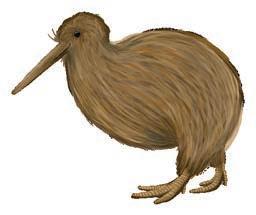
Guided practice
1 Use the compensation method (rounding) to solve these. Fill in the gaps.
e.g. 76 – 1976 – 20 = 56 add 1 back 57
a 53 – 2153 – 20 = 33 take away 1 more
b 85 – 2885 – 30 = 55 add 2 back
c 167 – 22167 – 20 = 147 take away more
d 346 – 198346 –
e 1787 – 390
f 5840 – 3100
g 6178 – 3995
Splitting numbers can make subtraction easier. For example, 479 – 135 = ?
• Split (expand) the number you are taking away: 135 becomes 100 + 30 and 5
• First take away 100: 479 – 100 = 379
• Next take away 30: 379 – 30 = 349
• Then take away 5: 349 – 5 = 344
• So, 479 – 135 = 344
2 Use the split method. Fill in the gaps.
a 257 – 126
b 548 – 224 224 =
c 765 – 4 42
d 878 – 236
e 999 – 75 3
Independent practice
1 Use the compensation method to solve these – or find your own sensible short cut.
a 47 – 22
b 184 – 29
c 547 – 231
d 2455 – 1219
e 5667 – 2421
2 Use the split method to solve these – or find another short cut.
a 45 – 24
b 464 – 343
c 676 – 254
d 5727 – 3325
e 8958 – 5635
FINAL
3 The split method can be used on an open number line. Fill in the gaps.
e.g. What is 900 – 350?
–
Answer: 900 – 350 = 550 a What is 776 – 423?
b What is 487 – 264?
– 400
Answer: 776 – 423 = 776 – 3– 20
A nswer: 487 – 264 = c What is 1659 – 536? Answer: 1659 – 536 =
Another method for subtraction is to count up.
Tina buys a sandwich for $3.80. She gives a $5 note. To work out the change, the shopkeeper starts at $3.80 and counts up to $5.
$3.80 up to $4 is 20c
$4 up to $5 is $1
The change is 20c + $1 = $1.20 a a toy at $7.50
The difference between $3.80 and $5 is $1.20. That is another way of saying $5 – $3.80 = $1.20.
4 Use the counting-up method to find the change if you paid for each item with $10.
a book at $8.75 c a melon at $3.50
a game at $5.35
a pencil set at $2.15
You can also use the counting-up method to find the difference between ordinary numbers. For example, what is the difference between 200 and 155?
• 155 up to 160 is 5
• 16 0 up to 200 is 40
Altogether I counted up 45, so the difference between 200 and 155 is 45.
5 Use the counting-up method to work out the difference between these numbers.
6 Use a mental method of your choice to find the answers to these problems. Be ready to explain the methods you use.
Extended practice
1 A football game starts at 1:30 pm and ends at 3:05 pm. How long does it last?
2 The difference between two 3-digit numbers is 57. What might the numbers be?
3 Iva receives $2.40 change after paying with a note. Which banknote might have been used and how much was spent?
4 What is 4235 – 397? Explain how you got the answer.
5 Bob, Bill and Ben buy the same model of car from different dealers. Bob pays $7464 for his car. Bill pays $193 more than Bob, but Bill pays $193 less than Ben.
How much do Bill and Ben pay for their cars?
FINAL
6 Fill in the gaps to show three more ways to make the subtraction correct. e.g. 613–535=78
Unit 2: Topic 4
Subtraction written methods
Some written subtractions involve regrouping. Here is a reminder of how it works, using Place Value Blocks and small numbers, such as 54 – 25.
Step 2
Regroup a ten for 10 ones.
Step 1
Start with 54. (You cannot take away 5 ones.)
Step 3
There are still 54 (4 tens and 14 ones).
Guided practice
Step 4
Take away 5 ones.
Step 6
Take away 2 tens.
Step 5 That leaves 49. Step 7 The answer is 29.
When you write the algorithm, you regroup in the same way.
There aren’t enough ones. Regroup a ten. That leaves 4 tens.
Now there are 10 + 4 ones = 14.
1 You could use Place Value Blocks to help with the regrouping as you complete these algorithms.
Subtraction with larger numbers works in the same way. Start with the ones column.
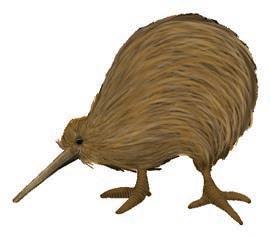
Independent practice
1 Practise regrouping with subtraction. Look for patterns in the answers.
2 Once you know how to subtract with regrouping, it doesn’t matter how large the numbers are. Complete the following. There is a pattern in the answers.
3 There is also a pattern in the answers to these five-digit subtractions.
4 Use the digits 1, 3, 2, 6, 4 and 7. Make the largest number using all the digits and the smallest number using all the digits. Find the difference between the two numbers. Working-out space
5
Rounding and estimating can help you avoid making careless mistakes. Imagine you subtract 189 from 913 and get an answer of 824. If you round and estimate you know the answer is wrong. 900 – 200 = 700, so the answer must be around 700. Write an algorithm and find the exact answer.
Working-out space
6
One algorithm in each pair is wrong. Estimate the answer, then circle the correct algorithm.
Sometimes when you regroup, there is nothing in the next column. Here’s what to do:
More ones are needed … … but there are no tens
Regroup a hundred. That leaves 2 hundreds.
Regroup a ten. That leaves 9 tens.
… so regroup FROM the hundreds TO the tens first.
Now there are 10 tens.Now there are 15 ones.
7 Practise regrouping across two columns with these subtractions.
Extended practice
1 Follow the rules to write three subtraction algorithms. Each algorithm must:
• be a five-digit number taking away a five-digit number
• be different from the other two
• have the answer 999.
2 This table shows the size of the crowd at some sporting events around the world. Use the information to answer the questions.
Sport Size of crowd Year Place
Gaelic Football 90 556 1961 Dublin, Ireland
Hurling 84 865 1954 Dublin, Ireland
AFL 121 696 1970 Melbourne, Australia
Rugby Union 109 874 2000 Sydney, Australia
NFL 102 368 1957 Los Angeles, USA
a What is the difference between the biggest and smallest crowds in the table?
b By how many was the American Football (NFL) crowd bigger than the Gaelic Football crowd?
c What is the difference between the total of the two Irish games and the total of the two Australian games?
d Use rounding methods to circle the correct response.
Working-out space
The difference between the size of the crowds at the Rugby Union and Hurling games was about: 22 000 23 000 24 000 25 000
3 The world’s smallest dog is a Yorkshire terrier. It is only 76 mm from the ground to its shoulder. The tallest dog is a Great Dane, which measures 1054 mm high from the ground to its shoulder.
If they were side by side, what would be the difference in their heights?
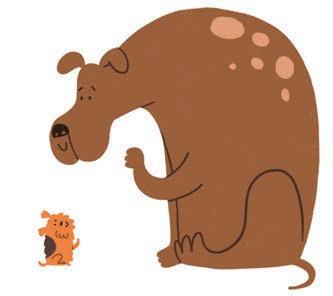
Unit 2: Topic 5 Multiplication mental methods
The ten trick Multiplying by ten is easy—but you don’t just add a zero. The digits move one place bigger.
(If you added a zero to multiply 1.3 m by 10, the answer would be 1.30 m and that’s the same length.)
Guided practice
1 Complete the grid.
2 Multiply each of these by 10.
Remember, move the digits one place to the left when you multiply by ten.
When you multiply by 100, the digits move two places to the left. For example, what is 11 × 100? 3 Multiply by 100.

Independent practice
Once you know the ten trick, you can use it to multiply by multiples of 10.
In 5 × 30, 30 is the same as 3 tens, so change it to 5 × 3 tens.
5 × 3 = 15, so 5 × 3 tens = 15 tens, or 150.
1 Fill in the table.
× 20 × 30
Rewrite the problem and solveRewrite the problem and solve
6 × 20 = 6 × 2 tens
6 × 2 tens = 12 tens
a 6
12 tens = 120
So, 6 × 20 = 120
b 9
c 8 d 7
Doubling
To multiply by 4, you can double a number and then double it again.
To multiply by 8, you can double a number three times.
2 Fill in the gaps.
6 × 30 = 6 × 3 tens
6 × 3 tens =
Doubling and halving
3
Fill in the table.
e.g. 5 × 6 10 × 3 30
a 3 × 14 6 × 7
b 5 × 18 10 × 9
c 3 × 16
d 5 × 22
e 6 × 16
f 4 × 18
4 Here is a mental method for multiplying by 5.
a 16
b 18
c 24
d 32
e 48
5 Use your choice of method to solve these. Be ready to explain how you got the answer.
If you double one number and halve the other, it can make multiplication easier. It works like this: Imagine you didn’t know that 5 × 6 = 30. You could double 5 and halve 6. This would give the same answer: 10 × 3 = 30. a 18 × 10 b 14 × 100
c 2.5 m × 10
Extended practice
1 Use the split method to multiply by 15. × 15 × 10
e.g. 12
a 16
b 14
c 20
d 30
e 25
2 At the beginning of the year, Dee’s mum gave her two spending-money choices.
• Choice 1: “Would you like $10 a week this year?”
• Choice 2: “Would you prefer 10c for the first four weeks, then double it for the next four weeks, then double it for the next four weeks, and so on for the rest of the year?”
• Dee remembered the ten trick and said, “52 weeks × $10 is $520. I’ll take Choice 1 thanks, Mum.”
Was this the better choice? How much would Dee have got if she’d taken Choice 2?
+ 60 = 18012 × 15 = 180
Working-out space
3 Tran is reading books for his school’s read-a-thon. He writes down how many pages he reads each day for a week.
Monday 48
Tuesday 48
Wednesday 48
Thursday 48 Friday 48
Saturday 45 Sunday 45
a Use mental methods to find the total number of pages Tran reads during the week.
b Explain the way you found the answer.
Unit 2: Topic 6 Multiplication written methods
Area model
You can work out multiplication problems by breaking the numbers down by place value and marking them off on grid paper.
This is called an area model, because as you calculate the total number of squares marked off, you are finding the area of the rectangle.
Guided practice
Would I get the same answer if I multiplied by the ones first?

Shade the model and fill in the blanks.
Guided practice
Short multiplication
42 × 4 is the same as 2 × 4 and 4 tens × 4, so the answer is 8 plus 16 tens (160). You can make written multiplication short by writing a short algorithm. You start with the ones and then multiply each column in turn.
If you need to regroup, you can do it like this.
3 tens × 4 = 12 tens There is another 1 ten. That makes 13 tens.
1 Complete the algorithms. Regroup if necessary.
4 × 4 = 1 ten and 6 ones
1 ten goes in the tens column.
2 Solve these problems in the same way.
It works the same with larger numbers. Start at the ones and complete each column in turn.
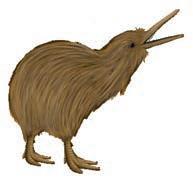
Independent practice
1 Once you understand the short form of multiplication, it doesn’t matter how big the number is that you are multiplying. Start at the ones column and complete each column in turn.
2 Complete the algorithms. Look for a pattern in the answers.
3 To multiply an amount of money, start with the column of least value. Complete these in the same way as the example.
The ten trick W hen you are multiplying by a multiple of ten, you need to remember the “ten trick”.
In the ten trick, the digits move one place to the left when you multiply by ten.
Put a ZERO as a space filler.
4 Use the ten trick to complete these algorithms.
Then just multiply × 2.
Multiplying by a 2-digit number is like doing two multiplications in one. You split the number you are multiplying by.
5 Split the numbers to multiply. Use separate paper to work out the answers to questions d, e and f. a
is 15 × 24?
Make two multiplications.
Make two multiplications.
Add the answers.
Make two multiplications.
Make two multiplications.
Add the answers. Make two multiplications. Make two multiplications.
Add the answers.
Extended practice
An aeroplane flies millions of kilometres in its lifetime. This table shows the distances from Melbourne airport to other airports around the world.
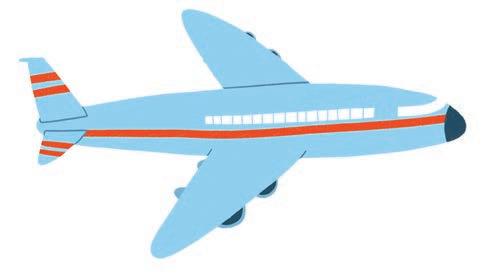
Distance from Melbourne to:
Adelaide, Australia 651 km
Bangkok, Thailand 7363 km
Chicago, USA 11 559 km
Darwin, Australia 3143 km
Edmonton, Canada 13 993 km
Frankfurt, Germany 16 308 km
Glasgow, Scotland 16 962 km
Honolulu, USA 8870 km
Istanbul, Turkey 14 619 km
Johannesburg, South Africa 10 326 km
Kuala Lumpur, Malaysia 6360 km
Los Angeles, USA 12 764 km
1 Choose an efficient multiplication method to find the answers. You may need extra paper for your calculations.
a What is the distance of a return trip to Istanbul?
b How far does a plane fly if it makes three return trips to Bangkok?
c If a plane flies to and from Chicago eight times, how far does it fly?
d A plane flies from Melbourne to Darwin and back twice a day for two weeks. What distance does it cover?
e If a plane travelled to and from Johannesburg 50 times, would it have flown a million kilometres?
2 People can earn points for the distances they travel on certain airlines. ABC Airlines offers one point for every kilometre that its passengers fly.
a Olivia flies from Melbourne to Adelaide on business each day and back home again from Monday to Friday. How many points does she earn in two weeks?
b Tran travels from Kuala Lumpur to Melbourne once a month to visit his family. How many points does he earn in a year?
c How many points does a family of four people earn by going on a holiday to Frankfurt?
3 A plane flies from Melbourne to Adelaide and back twice a day. How many kilometres does it fly in one week?
Unit 2: Topic 7
Division written methods
One written way to solve a division problem is to split the number you are dividing by.
Guided practice
Let’s share 86 marbles between us two.
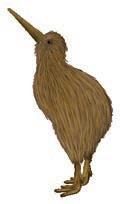
86 ÷ 2 is the same as 80 ÷ 2 and 6 ÷ 2 80 ÷ 2 = 40 6 ÷ 2 = 3 So, 86 ÷ 2 = 40 + 3 = 4 3
1 Split these numbers to solve the division problems.
a What is 68 ÷ 2?
6 8 ÷ 2 is the same as 60 ÷ 2 and 8 ÷ 2.
60 ÷ 2 =
8 ÷ 2 =
So, 6 8 ÷ 2 = + = b What is 69 ÷ 3? 6 9 ÷ 3 is the same as 60 ÷ 3 and 9 ÷ 3. 60 ÷ 3 = 9 ÷ 3 = So, 6 9 ÷ 3 = + =
c What is 84 ÷ 2?
8 4 ÷ 2 is the same as 80 ÷ 2 and 4 ÷ 2. ÷ 2 =
2 =
So, 8 4 ÷ 2 = + = d What is 124 ÷ 4?
e What is 122 ÷ 2?
122 ÷ 2 is the same as ÷ 2 and 22 ÷ 2.
÷ 4 =
÷ 4 =
124 ÷ 4 = + =
÷ 2 = 22 ÷ 2 = So, 122 ÷ 2 = + = f What is 145 ÷ 5? 145 ÷ 5 is the same as ÷ 5 and ÷ 5. ÷ 5 = ÷ 5 = So, 145 ÷ 5 = + =
Division can be set out in an algorithm. You put the number in a “box” and split it up. This is called short division. Imagine the problem is 42 ÷ 3. This is how it works:
The answer to a division is called a quotient.
Step 1 4 tens split into groups of three makes 1 group of three tens and 1 ten left over.
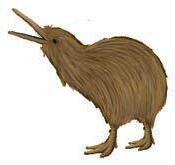
1 Solve these division problems using the short division method.
Step 3 12 ones split into groups of three makes 4.
Step 2 Regroup the ten for 10 ones. Now there are 12 ones.
2
These problems contain larger numbers, but you can solve them in the same way.
There aren’t enough hundreds to make groups of 2. We start with 11 tens. 11 tens split into groups of 2 = 5 remainder 1 ten.
Regroup the ten for 10 ones. That makes 18 ones. 18 split into groups of 2 = 9.
Solve these division problems.

Sometimes, the number you are dividing will not split equally. When this happens, you have a remainder. This can be shown using “r” for remainder.
For example, 13 ÷ 3 = 4 r 1. You can also show the remainder as a fraction. For example, 9 ÷ 2 = 4 1 2
Solve the division problems. Use “r” to show the remainder.
5 Solve the division problems. Show the remainder as a fraction. For example,
Extended practice
1 Not every number can be divided equally by other numbers. Write algorithms for these. Use remainders where necessary in the answers.
2 In real life, we have to work out what to do with remainders. You know that 7 ÷ 2 = 3 r 1, 9 ÷ 2 = 4 r 1 and 13 ÷ 2 = 6 r 1. What is the best way to express the answers in these real-life situations?
a Seven doughnuts shared between two people.
b Two people are given nine marbles. How many can each person have?
c Two sisters share $13. How much do they each get?
3 Adam and Billy are cooking pancakes. Their friends are coming over, so they need to make pancakes for eight people!
Find the missing values and complete the pancake recipe table below.
4 At a chicken farm, 3000 eggs a day are packaged. They are put into boxes. Each box can hold 8 dozen eggs. How many boxes are needed for 3000 eggs?
Unit 2: Topic 8
Factors, multiples and square numbers
A factor is a number that will divide evenly into another number: 2 is a factor of 4.
A multiple is the result of multiplying a number by a whole number: 6 is a multiple of 3 (3 × 2 = 6).
Guided practice
1 Circle the factors of each number.
e.g. The factors of 10 are: 1 2 3
a The factors of 8 are:
b The factors of 5
d The factors of 6 are:
e The factors of 2 are: 1 2
f The factors of 4 are: 1 2 3
g The factors of 7 are: 1 2 3
h The factors of 3 are: 1 2 3
2 Write the first ten multiples of each number.
e.g. 10: 10, 20, 30, 40, 50, 60, 70, 80, 90, 100
a 3:
b 6:
c 9:
d 2:
e 4:
f 8:
g 7:
h 5:
1 is a factor of every whole number.
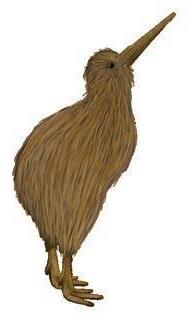
Independent practice
1 Write the factors of each number.
a 15 b 16
c 20 d 13
e 14 f 18
2 Which numbers between 20 and 30 have exactly:
a two factors? b four factors?
c three factors? d six factors?
3
a List all eight factors of 24.
b Which number between 30 and 40 has even more factors than 24?
List its factors.
4 The number 2 is a factor of every even number.
Factors that are the same for more than one number are called common factors The factors of 16 are: 1248 16 The factors of 20 are: 1245 10 20 The common factors of 10 and 20 are: 124
a The factors of 4 are:
The factors of 8 are:
The common factors of 4 and 8 are:
c The factors of 14 are:
The factors of 21 are:
The highest common factor (HCF) of 14 and 21 is:
b The factors of 6 are:
The factors of 8 are:
The common factors of 6 and 8 are:
d The factors of 12 are:
The factors of 18 are:
The HCF of 12 and 18 is:
5 For each row, circle the numbers that are multiples of the red number.
6 How do you know that:
a 74 is a multiple of 2?
b 48 is a multiple of 3?
c 1001 is not a multiple of 10?
d 5551 is not a multiple of 5?
7 When numbers share the same multiples, we call them common multiples. List the multiples of 2 and 3 as far as 30. Circle the common multiples.
Multiples of 2:
Multiples of 3:
8 Find a common multiple of 4 and 5 between 1 and 30.
9 Find a common multiple of 2 and 3 between 31 and 40.
What is the lowest common multiple of:
a 6 and 9?
b 3 and 4?
c 5 and 7? d 3 and 5?
e 5 and 9? f 4 and 7?
Square numbers
Square numbers are numbers that can be shown in a square pattern.
A square number is the result when a number is multiplied by itself. 4 is a square number. 4 dots make a square pattern, and 2 multiplied by itself makes 4.
11 These are the first six square numbers. Fill in the gaps.
12 Complete the grid and fill in the gaps to show the first ten square numbers.
13 What is the next square number after 100?
Extended practice
1 In a biscuit factory, they make a lot of the same item. When the biscuits are ready, they have to decide how many should be put in each packet.
a If 5 0 biscuits were baked in an hour, they could put all 50 in one box. Find another five factors of 50 that will show the other ways that 50 biscuits could be packed.
b What would be a sensible number of biscuits to put in each packet?
2 A doughnut machine makes a batch of four doughnuts every minute.
a Circle the numbers of doughnuts that it is possible for the machine to make:
b How many doughnuts does the machine make in one hour?
c If the machine slowed down to three doughnuts a minute, which numbers in question 2a would it be possible for the machine to make?
d Which of the numbers of doughnuts can be made from both the faster and slower speeds?
3 Pencils at the Pixie Pencil Company come off the conveyor belt in batches of 96. Find all the options for the number of pencils that could go in a packet.
4 The Bigfoot Sock Company makes 100 socks a day. Every sock is the same size and colour.
a How many different ways could the socks be packed?
b Bigfoot’s customers will not accept an odd number of socks. What are the options for the number of socks that could be put in a pack from one batch?
Unit
What does a fraction look like? A fraction can be part of a whole thing. A fraction can be part of a group of things. The number on the top is the numerator. The number on the bottom is the denominator
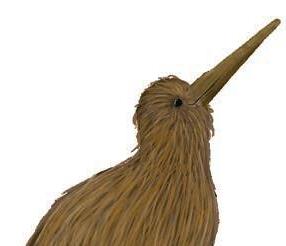
Guided practice
1 Write the fractions in words and numbers.
1 Fill in the gaps on the number lines.
2 Which is closer to 1 in each pair? Use the number lines in question 1 to help.
3 Which fractions are the same distance along the number line as 1 2 ?
4
Use the number lines on page 44 to help you order each group from smallest to largest.
a 1 1 5 , 4 5 , 1 5 , 1, 3 5 , 2 5
b 7 10 , 3 10 , 1, 9 10 , 2 10 , 6 10
c 1 2 , 1 4 , 1 3 8 , 1 10 , 1 5
d 3 8 , 3 10 , 3 4 , 3 6 , 3 3
e 2 5 , 2 8 , 2 3 , 2 10 , 2 6
5 Use the symbols > (is bigger than), < (is smaller than) or = to complete these number sentences.
i 1 5 6 1 2 3
6
a Circle the two fractions that describe the position of the triangle on the number line. 6 8 and 6 10 6 8 and 1 4 6 8 and 3 4
b Circle the fraction that describes how far from 1 the triangle is.
c Draw a diamond that is 3 8 of the way from 0 to 1.
7 Find the whole set from the fractional part.
a Akira received 1 3 of the prize, which meant she received $24. What was the total prize amount?
b Ken used ribbon to wrap a present. He used 2 5 of the ribbon, which was 40 cm. How long was the original ribbon? 0 1
Simplifying fractions
Izzy and Anna shared six doughnuts. Izzy got 3 6 of the doughnuts.
We would usually say, “Izzy got 1 2 of the doughnuts” because it is easier to understand.
Simplifying fractions means converting fractions to the simplest form.
To simplify fractions:
1 Write all the factors of a numerator and denominator.
2 Find the HCF.
3 Divide both numerator and denominator by the HCF.
When simplifying 5 12 , there is no common factor other than 1. 5 12 is already in its simplest form.
8 List all the factors of the numerator and denominator, circle the HCF, and then simplify each fraction.
9 Simplify the fractions.
Extended practice
1 a Divide the rectangle into three equal parts.
b Shade one part.
c Write two fractions that describe the shaded part.
2 Write these fractions and mixed numbers at the correct places on the number line.
3 Use your knowledge of factors and multiples to show the connection between the numerators and denominators in each pair of equivalent fractions. Fill in each box.
4 Some people say it is impossible to fold a square of paper in half, then half again, and so on, more than eight times.
Is it true? How many times can you keep folding a piece of paper in half?
When you can go no further, write down the number of folds, then open the paper out and find the fraction that the folds have split the paper into.
• Number of folds:
• Fraction: Was the result as you expected? Write a sentence to say how easy or how difficult you found this task.
Unit 3: Topic 2
Adding and subtracting fractions
Working with fractions is like working with numbers when you first started school. A fraction such as 3 4 tells you the name of the fraction (denominator) and the number of parts that you have (numerator).
Guided practice
You can add fractions with the same denominator just as you do with ordinary objects.

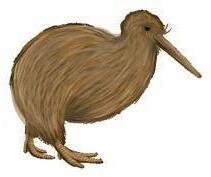
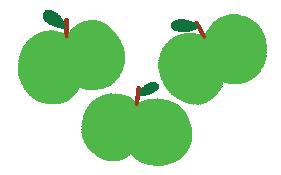
1 Fill in the gaps. It works in the same way for subtraction.
Independent practice
1 Write the number sentence.
2 Use two colours to shade each diagram, to match the number sentence.
3 Use the diagrams to help complete the subtraction sentences.
If the total comes to more than one whole, you use an improper fraction ( 5 4 ) or a mixed number (1 1 4 ).
4
Write the answer as an improper fraction and as a mixed number.
5 Use the number lines to help you add and subtract.
6 Complete the following. Use improper fractions and mixed numbers for the addition problems.
Extended practice
It is possible to add different fractions, such as halves and quarters, but first you need to change them to the same type of fractions.
For example, what is 1 2 + 1 4 ?
• On the fraction wall, you can see that 2 4 is the same size as 1 2
• Change 1 2 to 2 4
• Now you have 2 4 + 1 4 = 3 4
1 Use the fraction wall and the diagrams to help you complete these addition problems.
2 Use the fraction wall, diagrams or number lines to help solve these problems.
Unit 3: Topic 3 Decimal fractions
If you split one whole into 10 equal parts, each part is a tenth. If you split one whole into 100 equal parts, each part is a hundredth. You can show tenths and hundredths as fractions and as decimals.
Guided practice
1 Write the shaded part as a fraction and as a decimal.
2 Shade the diagrams to match the decimals.
3 Write these as decimals.
4 Write these as fractions.
Multiplying a decimal by 10 is almost the same as multiplying a whole number by 10: everything moves one place bigger.
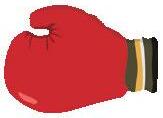
Independent practice
Dividing by 10 moves every digit the opposite way:
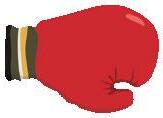
The difference is the zero You have to decide whether it is needed.
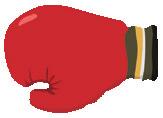
34.0 has the same value as 34, so you can write 3.4 × 10 = 34.
We don’t usually put a zero unless it is necessary.
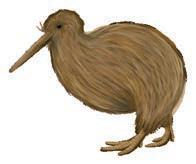
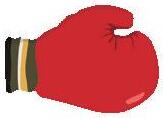
Multiplying by 100 moves each digit two places larger:

Solve these multiplication problems.
Dividing by 100 moves each digit two places smaller:

Solve these division problems.


Solve these multiplication problems.
Extended practice
1 Write the position of the triangle on each number line.
2 There are 100c in $1. So, one cent is 1 100 of a dollar. It can also be written as $0.01.
How can five cents be written with a dollar sign and a decimal?
3 Write the following with a dollar sign and a decimal:
4
To work out $2.90 × 3 on a calculator, you could press seven keys like this: 2 . 9 0 × 3 =
Show how it could be done by pressing just six keys:
5 Some cafés show their prices using just one decimal place.
Using the normal way of writing money, find the cost of:
a a small coffee and a large muffin.
b a large coffee and two fruit scones.
c a small and a large coffee, a small muffin and two plain scones.
d a large coffee and one plain scone.
e two large coffees, one plain scone and two fruit scones.

Unit 3: Topic 4
Adding and subtracting decimals
You can add or subtract decimals just like you do with whole numbers:
But if there is a different number of columns, it is important to line up the numbers according to their place value:
Use estimating and rounding to check your answers.
Guided
practice
Round 3.14 down to 3. Round 1.73 up to 2. 3 + 2 = 5, so your answer will be close to 5.
Guided practice
1 Find the answers.
2
Round 23.17 to 23. Round 59.7 to 60.
23 + 60 = 83, so the answer will be close to 83.
The decimal point doesn’t make much difference to the way you work, but it makes a BIG difference to the answer.
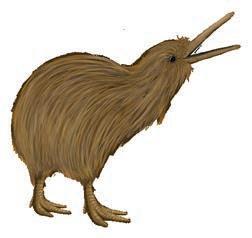
Use place value to line up the numbers and calculate the answers. Use estimating or rounding to help check your answers.
1 Calculate the answers.
4
Estimate the answer for each problem (to the nearest whole number), then use a vertical algorithm to solve each one. a 24.07 + 7.54
Estimate: + = b 829.29 + 73.78
Estimate: + = Actual: Actual: c 607.24 – 23.17 Estimate: + =
5 Find the answer for each problem and then round the answer to one decimal place. a 36 5.12 + 189.62 = b 15 4.32 – 87.58 = + +
FINAL
490.23 − 164.64 Estimate: + =
Rounded answer: Rounded answer: c 734.18 – 408.41 = d 276.47 – 150.82 = +
Rounded answer: Rounded answer:
Extended practice
1 The answer to this equation is 9.18. Try to find at least two ways of filling the gaps to complete the equation.
a 0 + 4 2 + 36 = 9.18
b 0 . + 4 . 2 + . 36 = 9.18
2 Did you know that your skin weighs almost as much as your bones? This table lists the mass of the eight largest organs in an adult who weighs 68 kg.
Organ Mass
Working-out space
Working-out space
a Rewrite the table, listing the organs from heaviest to lightest.
Organ Mass
b Find the total mass of the heart and lungs.
c How much heavier is the skin than the brain?
d The mass of which organ is closest to the mass of the kidneys?
e The right lung is 0.07 kg heavier than the left lung (to make space for the heart). What might the two masses be?
f What is the difference between the mass of the lungs and the mass of the pancreas?
g The mass of an adult male gorilla is about 240 kg, but his brain weighs only 0.465 kg. How much heavier is a human brain than a gorilla’s brain?
Unit 3: Topic 5
Percentages
The symbol % stands for per cent. It means out of a hundred. 1% means one out of a hundred. It can be written as a fraction, as a decimal or as a percentage.
Guided practice
1 Write each shaded part as a fraction, as a decimal and as a percentage.
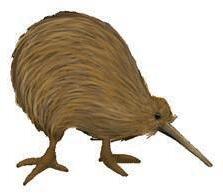
Another way of saying 100% is 1, or one whole. The amount shaded is: 1
2 Shade the grid. Fill the gaps.
Independent practice
1 Fill in the gaps to match the percentages, decimals and fractions.
2 Complete the table.
3 Write true or false.
4 Compare the fractions and percentages.
a 1 2 of this square is shaded.
b of this square is shaded.
c of this square is shaded. Shade the same amount of this square. Shade the same amount of this square.
the same amount of this square.
5 Order each row from smallest to largest.
6 Follow the instructions to colour these circles.
30% red, 0.4 blue, 30 100 yellow
7 Write the fraction of triangles that are green as a decimal, as a fraction and as a percentage.
8 Follow the instructions to colour these diamonds.
40% red, 20% blue, 30 100 yellow, 5% green, 5% white
9 There are 20 beads on the string. Colour them in these percentages:
50% red, 25% blue, 25% yellow.
FINAL
10 a Choose a way to colour 25% of these beads. Leave the rest of the beads white.
b Write the white part of the string of beads as a fraction, as a decimal and as a percentage.
Extended practice
1 If someone offers you 50% of their apple, it’s the same as offering a half. Complete the table to show what you would get if you were offered these items.
a Box of 20 doughnuts
b Pack of 50 pencils
c Tin of 80 lollies
d Bag of 1000 marbles
2 In some situations it is possible to have more than 100%.
a If you cut a 1-metre piece of string and Sally said she needed a second piece that was 50% of the length of the first one, how long would it be?
b If Sally asked for another piece that was 100% of the length of the first one, how long would it be?
c If Sally asked for a fourth piece that was 200% of the length of the first one, how long would it be?
3 You need a knowledge of percentages to change the size of drawings in a computer program such as Microsoft Word. You will need a computer for the next activity.
a Open a new Word file and click on the Insert menu.
b Choose a shape from the Shapes menu (PC) or Basic Shapes (Mac).
c Click and drag to draw a shape.
d Double-click on the shape so that you can format (change) it.
FINAL
e Click on the Size menu.
f Look for the Scale option and change 100% to 120%. Then click OK.
g Take note of what happened. Experiment to see how you can double the size of the shape.
Write a short report about the way that entering different percentages can change a shape.
Unit 4: Topic 1
Year 6 want to raise money for an end-of-year party. They decide to buy fruit, cut it up and sell 100 fruit salads at a stall on “Fruit Salad Friday”. They want to make a profit. This means that they sell the fruit for more than it costs to buy it.
Guided practice
1 Look at the sign. How much money will Year 6 take at the stall if they sell all 100 fruit salads?
The less it costs to prepare the fruit salad, the more profit they will make.
2 If the fruit costs $150 to buy, Year 6 will not make any profit. How much profit will they make if the cost of the fruit is:
a $100? b $75? c $50?
3 Year 6 decide to cut up five fruits into the fruit salads. How much would it cost if they bought:
a 1 kg of each fruit?
b 2 kg of each fruit?
c 500 g of each fruit?
d 5 kg of each fruit?
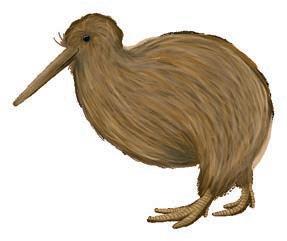
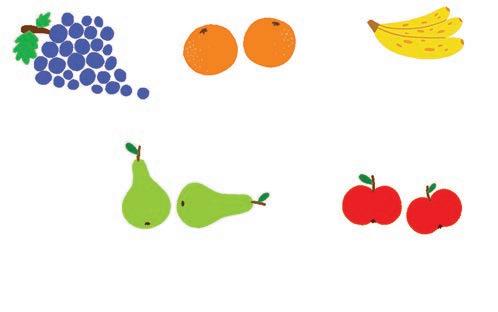
4 Flora’s Fruit Shop offers a 10% discount if Year 6 buy 10 kg of each fruit.
a What would be the total price before discount if Year 6 bought 10 kg of each fruit?
b What would be the discount?
c What would be the new price of the fruit?
5 If Year 6 bought 5 kg of each fruit, how much profit would they make?
Independent practice
1 Year 6 want to make a profit of at least $50, so they don’t want to spend more than $100. If they buy 5 kg of each fruit, how much over their budget are they?
2 Year 6 need to spend less on the fruit. They decide to buy only 2.5 kg of grapes.
a Circle the amounts that describe 2.5 kg of grapes compared to 5 kg of apples: 50% a quarter a half 0.5 0.75 25%
b How much do 2.5 kg of grapes cost?
3 Flora’s Fruit Shop send the fruit along with an invoice to show how much Year 6 owe.
a Write the cost for each type of fruit.
b Write the total price of all the fruit.
c Year 6 can get a 10% discount. Fill in the amount of the discount.
d Write the new discounted total.
10% discount if you pay by tomorrow.
Discount
4 How much under their $100 budget will Year 6 be after buying the fruit?
5 The students need to buy 100 bamboo spoons and either 100 bamboo bowls or 100 bamboo cups. Calculate the price and profit for each option.
Discounted total Working-out space
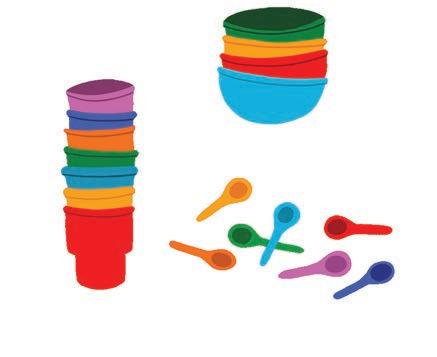
Spoons: $5.50
GST is a tax that has to be paid for some purchases. In New Zealand, GST is 15% but other countries have different percentages. For example, GST in Australia is 10%. A percentage of the cost is added to the price. The percentage can change.
6 The class used spoons and cups. On Fruit Salad Friday, GST was 10%. Fill in the GST amount and total on the receipt.
7 Fill the gaps to show what the receipt would have looked like if Year 6 had bought 100 spoons and 100 bowls.
Total:
8 Two furniture shops are selling the same tables and chairs. One shows the price without GST. The other shows the price including GST. Fill in the amounts to see which shop has the better price for a table and four chairs.

9 Both shops have an end-of-year sale. They offer 10% off the final prices. What is the new price for a table and four chairs at each shop?
Extended practice
1 A receipt for a restaurant meal shows a price of $90.20, including GST. Circle the price of the meal before 10% GST was added.
2.20
2 If GST is 10%, the price before the tax was added is 10 11 of the final price. You can see that this is true by using a final price of $11 for a meal:
• $11.00 ÷ 11 = $1.00. $1.00 × 10 = $10.00 for the meal before GST.
• $10.00 + 10% GST = $11.00
If the meal costs $22.00, what is the price before GST?
3 The two furniture shops in question 8 in the Independent practice section are now offering an end of financial year sale.
a Furniture World offers 25% off everything.
What is the cost of buying one table and four chairs from Furniture World?
b Furniture For You offers 50% off any table
What is the cost of buying one table and four chairs from Furniture For You?
c Which shop gives you better value?
Unit 5: Topic 1 Number patterns and algorithms
We use number patterns every day. You probably learned your first number pattern before you started school.
Guided practice

1, 2, 3, 4, 5, 6, 7, 8, 9, 10. Coming, ready or not!
1 The rule for this number pattern is: The numbers increase by two each time Continue the pattern.
2 Find the rule, then continue each number pattern. Write a rule for each pattern using the words increase or decrease.
3 There are two different rules in these patterns.
• Rule 1: If the number is even, you divide by 2.
• Rule 2: If the number is odd, you take away 1 and then you divide by 2.
Follow the two rules to complete the table.
4 It takes four steps to get to zero for the starting numbers in question 3. How many steps does it take to get to zero if the starting number is:
Independent practice
1 Read the rule to complete each table.
a Start at 5 and increase by 4 each time.
Term 123456789 10
Number 5
b Start at 10. Decrease by 0.5 each time.
Term 123456789 10
Number 10 9.5
2 Continue these patterns for the first ten terms. Write a rule for each pattern.
a 0, 0.2, 0.4, 0.6, Rule:
3 The rules for question 3 on page 68 can be shown in a diagram.
Using 18 as a starting number, the steps that follow the rules are:
Write
steps that take 22 to zero.
4 This diagram shows new rules. Follow the rules to take these numbers to zero.
Linear relationships
Sometimes, it’s a good idea to show number patterns in different ways, such as in a graph.
Laura is saving $20 per month. The table below shows how much savings she would have after each month.
Month 123456
Savings $ 20 40 60 80 100 120
We use a graph to show the relationship between months and savings. On the horizontal line, called the x -axis, months are shown. The vertical line, the y -axis, shows the savings. Plotting how much savings Laura has on the graph shows a straight line. When a graph shows a straight line, it means the two variables have constant change. In this case, savings go up by $20 each month as the number of months increases.
5 A doughnut shop sells a jam doughnut for $5.
a Complete the table below to show how much it costs to buy each number of doughnuts.
b Plot the results on the XY graph.
c Answer the question using the graph above. If Bella bought eight doughnuts, how much would it cost?
6 Marco has started working at a café. He earns $10 per hour.
a Complete the table to find out the earnings for the number of hours worked. Hours
Earnings $ 10 20
b Plot the results on the XY graph.
c If Marco worked 14 hours altogether, how much would he earn?
Inverse operations
An inverse operation is like showing an opposite fact.
For example, you know that 4 x 3 = 12. The inverse operation shows that 12 ÷ 3 = 4. From those two operations, we can find a family of four multiplication and division facts:


4 people have 3 marbles each. How many marbles altogether? (12)
Triangle of multiplication and division facts for 12, 4 and 3 .




12 marbles shared between 4 people. How many does each person have? (3)
3 people have 4 marbles each. How many marbles altogether? (12)



12 marbles shared between 3 people. How many does each person have? (4)
7 Fill in the blanks to show the family of multiplication and division facts for these numbers.
8 Write the family of multiplication and division facts for each triangle.
9 Using multiplication and division facts, explain the connection between 450, 9 and 50.
Extended practice
1 Imagine that you work for an advertising company. Your boss wants you to deliver advertising leaflets in a town with 1000 houses. She knows that some houses will have a No Junk Mail sign. This table gives information about whether the houses are likely to accept junk mail.
Number of houses 123456789 10 11 12 13 1415
Junk mail OK? yesyesyesyes no yesyesyesyes no yesyesyesyes no
a Circle the ending for the rule that describes the pattern. The number of houses that do not accept junk mail is:
b How many out of 10 houses do not want junk mail?
c How many out of 100 houses would not want junk mail?
d How many out of 1000 houses would not want junk mail?
e How many leaflets will you need to deliver?
2 A toy company is ordering wheels for toy cars. Each car has four wheels. This table shows how many wheels are needed for the cars. Complete the table for the first ten terms of the pattern.
Number of cars
Number of wheels
3 Show the results from the table in question 2 on a XY graph. Find some grid paper, draw x - and y -axes (like the graphs in questions 5 and 6 in the Independent practice section) and plot all the points. Then, connect all the points with a line.
4 The toy company decides it needs to have extra wheels in case some get lost. They decide to get an extra wheel for every 25th car. Re-calculate the number of wheels that need to be ordered for: a 50 cars b 100 cars c
Unit 5: Topic 2
Order of operations and number properties
Order of operations
Working with number sentences is a bit like putting on your clothes. Sometimes the order of doing things does not matter—and sometimes it does!
Changing the order of putting on clothes …
Le ft then right, or right then left … Sock then shoe … Shoe then sock…

Guided practice
1 Try changing the number order with each operation.
Addition
Changing the order of numbers …
e.g. 3 + 2 = ?2 + 3 = ? Yes
a 14 + 2 = ? b 20 + 12 = ?
c 15 + 10 = ? Subtraction
The bold part is the first step to solving each equation.
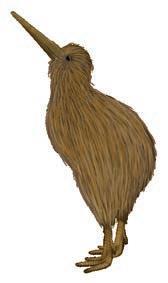
e.g. 3 × 2 = ?2 × 3 = ? Yes
a 14 × 2 = ?
b 20 × 12 = ?
c 15 × 10 = ?
2 Complete these sentences.
Can you see how addition and multiplication are connected?
a The answer is the same if you change the order of the numbers for addition and .
b The answer is not the same if you change the order of the numbers for
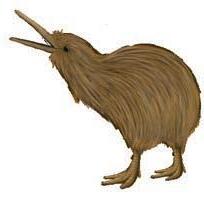
Independent practice
1 Solve these questions.
a 5 + 3 × 2 = 5 + 6 = b (5 + 3) × 2 =
c 6 × 4 – 2 = d 6 × (4 − 2) =
e 36 ÷ 9 − 3 = f 36 ÷ (9 − 3) =
g 8 + 16 ÷ 4 = h (8 + 16) ÷ 4 =
2 Solve these questions.
a 3 × (8 − 5) = b 24 ÷ 8 + 11 =
c 4 + 6 ÷ 2 = d 3 × 12 ÷ 4 =
e (7 + 1) × 2 + 3 = f 3 × (12 − 7) =
An equals sign shows that both the left side and right side have the exact same value.
An inequality sign shows which side has a larger value. Greater than Less than > <
For example, compare 3 × 2 and 2 × 5.
2 × 5 is bigger, so 3 × 2 < 2 × 5.
Remember, Alligator always wants to eat larger food!
3 Circle true or false.
a 8 + 2 × 4 < (8 + 2) × 4
b 24 ÷ 6 − 3 > 24 ÷ (6 − 3)
c 3 × 10 – 5 > (3 × 10) – 5
d (12 + 6) ÷ 3 + 3 < 12 + (6 ÷ 3) +3 true false
An equation is a number sentence in parts. The parts balance each other.
4 Complete these equations.
You can use equations to make calculation simpler.
5 Which of the following would balance 60 ÷ 2 ÷ 5?
6 Which of the following would not balance 17 + 19?
7 Which of these is not correct?
8 Find three different ways to balance the first part of the equation.
a 5 + 20 + 8
b 50 ÷ 2
c 72 – 25
d 6 × 2 × 10
e 3 + 23 + 12
f 40 ÷ 5 ÷ 2
Extended practice
So that we solve maths problems properly, we use this order of operations:
Grouping (brackets) first. Division and multiplication second. Addition and subtraction last .
1 Write the answers to these pairs of number sentences. Look for the problem in each pair that is easier to solve.
2 These pairs of number sentences look similar, but the answers are different.
3 What would you need to enter on a calculator to get the answer to 4 + 3 x 5?
4
When you read a word problem, things need to be done in the right order so that you arrive at the correct answer. Here is an example: Tran had ten $1 coins. He lost four coins at playtime (so he had $6). His aunty felt sorry for him and doubled the amount he had left ($6 × 2). How much did he have? ($12)
a To solve the problem, we could write a number sentence. However, doing the following calculation will not give the right answer: 10 – 4 × 2. Why?
b Write a number sentence that would solve the problem correctly.
5 Write a story to suit this number sentence: (12 + 6) ÷ 3
Unit 6: Topic 1 Length and perimeter
When you are measuring, it is important to be as accurate as possible. The length of this pencil is not 8 cm.
Guided practice
1 The pencil above is more than 8 cm. Circle the best estimate for its actual length: 9 cm 10
2 Write the length of each red line above it.
6 cm
3 Write the length of the red lines in centimetres and millimetres, and in centimetres with a decimal.
Estimate and then use a ruler to measure these lines. Write the lengths as you did in question 3.
Independent practice
The total length of all the sides of the rectangle is 2 cm + 1.5 cm + 2 cm + 1.5 cm = 7 cm, so the perimeter is 7 cm.
There is a quicker way to find a perimeter.
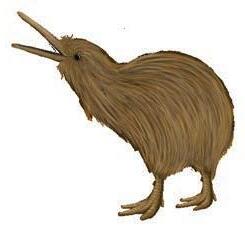
1 You could find the perimeter of the rectangle above by adding 2 cm and 1.5 cm (= 3.5 cm) and then doubling to get the answer (= 7 cm). Explain why.
2 Calculate the perimeters of these rectangles without using a ruler. (They are not drawn to scale.)
a How many lines would you need to measure to find the perimeter of this square?
b What is the perimeter of the square?
4 Find the perimeter of each 2D shape. How many lines did you need to measure?
In this topic, you have used centimetres and millimetres as units of length. Metres and kilometres can also be used.
• 10 mm = 1 cm
• 100 cm = 1 m
• 50 0 m = 1 2 km
• 10 00 m = 1 km
Use the information to complete these length conversion tables.
1 km
2 km
9 5 km
8
8 You can use different units of length to measure the same object. For example, a pencil could be described as 9 cm long or 90 mm long. Which two units of length would you use for these objects? On a separate piece of paper, estimate and measure the first three using both units of measurement.
a The length of a pencil sharpener
c The length of an eraser
b The height of a door
d The length of a road
9 Find the perimeters of these shapes. Write the answer in millimetres and in centimetres with a decimal.
Extended practice
1 There is a special right-angled triangle called a “3, 4, 5” triangle, because the sides are always in that proportion. A triangle with sides in those proportions always has a right angle in it. It doesn’t matter if the unit of measurement is centimetres, metres, millimetres or even kilometres.
On a separate piece of paper, draw triangles whose sides are multiples of “3, 4, 5” numbers. You could start with a 3 cm by 4 cm by 5 cm triangle and then a “6, 8, 10” triangle. With your teacher’s permission, you could draw a triangle measuring 3 m by 4 m by 5 m.
2 Draw a square that has a perimeter of exactly 10 cm.
3 Audrey has a pencil that is 14 1 2 cm long. Write the length in as many different ways as you can.
4 a This line is 3.2 cm long. Increase the length by 12.3 cm. b Write the total length of the line in two different ways.
5 Write the perimeters of these regular shapes in two ways. They are not drawn to scale.
Unit 6: Topic 2 Area
Area is the surface of something, such as the area of the top of a table. In a classroom, we usually measure area in square centimetres (cm2) or square metres (m2). It can also be measured in square millimetres (mm2), hectares (ha) or square kilometres (km2).
Guided practice
Area is always measured in squares.
1 The shapes have square centimetres drawn on them. Write the areas.
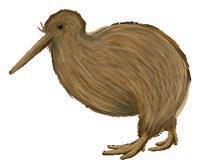
Area = 11 cm2
2 Write the area of these rectangles. e.g.
Area = 6 cm2
a Area = cm2 c Area = cm2 d Area = cm2 b Area = cm2 e Area = cm2
Independent practice
To find the area of a rectangle, you need to know: • how many squares fit on a row • how many rows there are.
1 Find the areas of these rectangles.
If you know the length and width of a rectangle, you can find the area by imagining how many squares will fit on a row and how many rows there are. You can see how it happens on this rectangle.
2 Use a method of your choice to find the area of each rectangle.
3 Use the dimensions of each rectangle to help find its area. They are not drawn to actual size.
To find the area of a triangle, imagine it as half of a rectangle. The area of triangle ABC is half of rectangle ABCD. Half of 8 cm2 = 4 cm2
4 Record the area of each shape.
a Area of rectangle ABCD =
Area of triangle ABC =
c Area of rectangle IJKL =
Area of triangle JKL =
b
Area of rectangle EFGH =
Area of triangle EFG =
5 Find the area of these triangles.
d Area of rectangle MNOP =
Area of triangle NOP = M P
Extended practice
1 Measure each rectangle to find its area.
2 If you can split a shape into rectangles, you can find its area. Find the area of each shape.
Area of A =
Area of B =
Area of A =
Area of B =
Total area =
Area of A =
Area of B =
Total area =
Area of A =
Area of B =
Area of C =
Total area =
Area of triangle: Area of rectangle:
Unit 6: Topic 3 Volume and capacity
Volume is the space something takes up. It is measured in cubes. This centimetre cube model has a volume of 6 cubic centimetres (6 cm3 ). Volume can also be measured in cubic metres (m3 ).
Capacity is the amount that can be poured into something. We normally use litres (L) and millilitres (mL). This spoon has a capacity of 5 mL.
Guided practice

1 Write the volume of each centimetre cube model. Everything that takes up space has volume— even me! e.g.

2 A cup has a capacity of about 250 mL. Circle the best estimate for the capacity of the following containers.
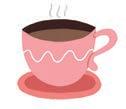

3 What is something that has a capacity of about a litre?
Independent practice
1 Write the volume of each centimetre cube model.
2 a How many centimetre cubes would be needed to make this model?
b What is the volume?
c If there were three layers the same, what would the volume be?
3 a How many centimetre cubes are on the bottom layer of this box?
b How many layers does the box hold?
c What is the volume of the box?
4 How do you know that the volume of this model is 8 cm3?
5 Look at the model in question 4. What would the volume be if the height were:
6
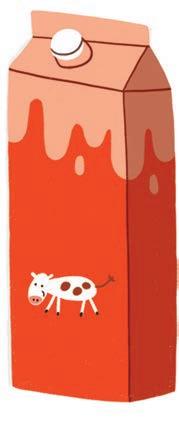
The capacity of the milk carton could also be written as 1000 mL, because there are 1000 mL in a litre.
Complete the table to convert between millilitres and litres.
7 Order each row from smallest to largest.
a 2 L, 400 mL, 2.5 L, 2350 mL
b 1 2 L, 450 mL, 0.35 L c 1850 mL, 1 3 4 L, 1.8 L d 1 4 L, 200 mL, 20 mL
5.5 L
1.25 L
8 Use the containers listed below and containers from around your classroom to measure capacity. Estimate first, then check with water.




Extended practice
1
a What is the volume of this rectangular prism?
b Explain why you can find the volume by multiplying the length by the width by the height.
2 Calculate the volume of each rectangular prism.
3 Scientists have proved that 1 cm3 takes up exactly the same space as 1 mL of water. This is hard to prove in real life. Try it for yourself.
You need 20 centimetre cubes and a measuring jug that goes up in 10-mL steps.
What to do:
• Put 30 mL of water in the measuring jug.
• Put 10 cubes in the water. What is the new level?
• Put 5 more cubes in the water. What is the new level?
• Put 5 more cubes in the water. What is the new level?
• Did it work like it was supposed to do? Write a few lines about what you did. If it didn’t work, suggest a reason.

Unit 6: Topic 4 Mass

Mass tells us how heavy something is. We use four units of mass.
Guided practice
1 Under each picture, estimate the most likely unit of mass (milligrams, grams, kilograms or tonnes).
Each unit of mass is 1000 times heavier than the one before it.
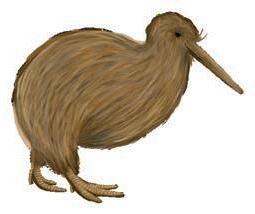

2 Complete the tables to convert between units of mass.
3 Write the mass of each box in grams.
Dog Apple Train
Grains of sand
Independent practice
1 Complete this table.
2 Not all scales have the same increments (markings). Look carefully at these scales and write the masses in kilograms and grams, and in kilograms with a decimal. The mass of this box can be written as 2 1 2 kg, 2.5 kg or 2 kg 500g.
3 Look at the scales in question 2. Would you use scale A, B, C or D if you needed to have:
4 Draw pointers on the scales to show the mass of each box.
5
a Reorder the trucks from lightest at the front to heaviest at the back.
b Which trucks are carrying less than 2 1 2 t?
c Which two trucks are carrying a combined mass of 4.5 t?
d True or false? The combined mass of all the trucks is more than 9 t.
6 These four apples have a total mass of half a kilogram, but none weigh exactly the same. Write a possible mass for each apple. Make sure the total is 1 2 kg.

7 Circle the best estimate for the mass of these objects, then measure them.
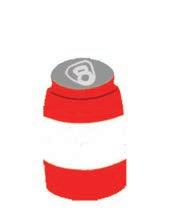
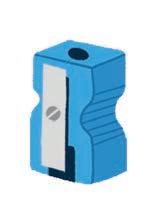

Extended practice
The mass of all four apples on page 92 was less than the mass of one record-breaking apple. Use the information in the table to complete the activities.
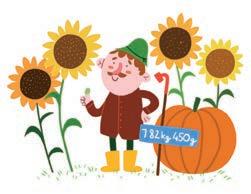
Record-breaking fruit or vegetableWhere and when? Mass Apple Japan, 2005 1.849 kg
Cabbage UK, 1999 57.61 kg
Lemon Israel, 2003 5.265 kg
Peach USA, 2002 725 g
Pumpkin USA, 2009 782.45 kg
Strawberry UK, 1983 231 g
Pear Australia, 1999 2.1 kg
Blueberry Poland, 2008 11.28 g
1 a Order the fruits and vegetables from lightest to heaviest.
b How much heavier than the cabbage is the pumpkin?
c How much heavier than the pear is the lemon?
d Which fruit is 1124 grams heavier than the heaviest peach?
e If strawberries like the heaviest one were sold in boxes of around a kilogram, how many would there be in a box?
f By how many grams is the heaviest strawberry heavier than the heaviest blueberry?
2 A group of seven Year 5 students found that they had a total mass of 273.854 kg.
a Divide the total mass by the number of students to find the average mass of a student in the group.
b Round the numbers and find out how many of the students it would take to balance the world’s heaviest pumpkin.
3 Sol bought three apples. The first had a mass of 125 g. The second had a mass of 133 g and the mass of the third was 117 g. Use the same process as in question 2 to find the average mass of one apple.
Unit 6: Topic 5
Guided practice
Guided practice
There are two main types of clocks: analog clocks and digital clocks. Analog clocks have been around for hundreds of years. Digital clocks are more recent. 1 Write the times under the clocks. Use am and pm e.g. Waking up

Independent practice
1 On a 24-hour clock, the times continue past 12 to 13, 14 and so on. 24-hour times are usually written as four digits with no spaces. Midnight is 0000. Fill in the 24-hour and am/pm times on this timeline.
2 Convert these times to 24-hour times. For example, 8:15 am becomes 0815.
3 Write your estimate time, and then check and record the actual time during your day.
b
c
d The
I
4 Owen’s football match starts at 1420 and lasts for 45 minutes. Show the starting and finishing times on the analog and digital clocks.
Starting time Finishing time
5 Fill in the gaps to show these times in four different ways. Remember to use the pm indicator if necessary.
6 This is Sam’s timetable for Friday at school. Use the information to complete the activities.
a At what time does the Maths lesson begin? (Use am/pm time.)
b When does the lunch break start? (Use am/pm time.)
c How long does Recess last?
d Lunchtime starts with 10 minutes “eating time”. How much playtime does Sam have after that?
e How long does the Literacy session last?
f Estimate the time that Story reading begins. (Use 24-hour time.)
7 Digital clocks are used for 24-hour time as well as am/pm times. Rewrite the times on these 24-hour clocks.
Extended practice
Puffing Billy
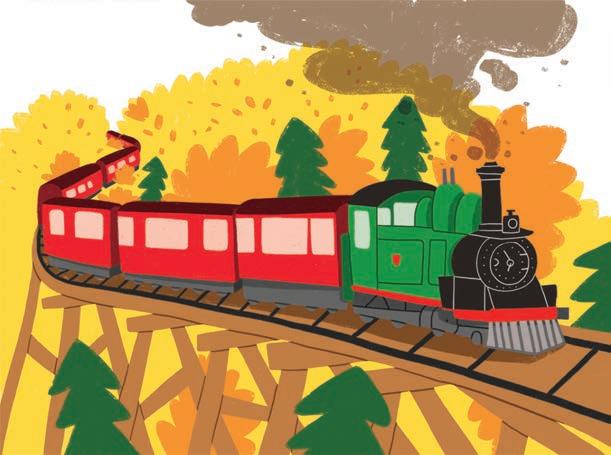
1
FROM BELGRAVE
Belgrave dep: 10:3011:10
Menzies Creek arr:10:5311:33
Menzies Creek dep:11:0511:35
Emerald dep: 11:2011:53
Lakeside arr: 11:30 12:08
Lakeside dep: …12:20
Cockatoo arr: … 12:35
Gembrook arr: … 13:00
There is a famous train in Victoria, Australia called Puffing Billy. It was built over 100 years ago. Puffing Billy got its name because it is a steam engine.
Above you can see part of a timetable for people who want to take a ride on Puffing Billy. Use the information to complete the following activities.
a How long does the 10:30 train take to get from Belgrave to Menzies Creek?
b How long does the 11:10 train wait at Menzies Creek?
c How much longer does the 10:30 train take to get from Belgrave to Lakeside?
d How long does the 11:10 train wait at Lakeside?
e How long does the journey take from Belgrave to Gembrook?
f Imagine there is a new summer service from Belgrave to Gembrook. The train leaves at 4:05 pm and takes the same length of time as the 11:10 train. At what 24-hour time will it arrive at Gembrook?
g The 11:10 train waits at Gembrook for an hour. It then returns to Belgrave, taking the same amount of time as the outward journey. At what 24-hour time does it arrive back at Belgrave?
Unit 7: Topic 1 2D shapes
A polygon is a closed shape with three or more straight sides. None of the sides cross over each other.
Guided practice
1 a Colour the polygons.
This is not a polygon.
A circle is a 2D shape, but it is not a polygon.
This is a polygon.

b Explain why the unshaded shapes are not polygons.
• B is not a polygon because
• is not a polygon because
• is not a polygon because
2 Most polygons are named after the number of angles in the shape. Write each polygon’s name. Use the word bank to help with spelling.
FINAL
Word bank pentagon quadrilateral triangle octagon hexagon
3 A polygon is either regular or irregular. Regular shapes have all sides and angles the same. Irregular ones do not. Shade the regular polygons. Draw stripes on the irregular polygons.
Independent practice
All triangles have three sides. Triangles can be named according to the lengths of their sides and the sizes of their angles.
Scalene triangle: No sides are the same length. No angles are equal.
Right-angled triangle: There is a right angle in the triangle.
1 This rectangular pattern is made from triangles. Colour it according to the types of triangles:
• green for scalene triangles.
• yellow for right-angled triangles.
• blue for isosceles triangles.
• red for equilateral triangles.
2 Some triangles are two different types Write the two types of triangles for these.
Isosceles triangle: Two sides are the same length. Two angles are equal.
Equilateral triangle: All sides are the same length. All the angles are equal.
Isosceles and and and and a b c d
3 Use a pencil and ruler to draw these triangles. You could use a setsquare to help. One side of each triangle has been drawn.
Interior angles of triangles
Interior angles in a triangle add to 180°.
For example, this right-angled triangle is 30° at the bottom.
180 – (90 + 30) = 60 The top corner is 60°.
To find an unknown angle, add two of the angles and subtract it from 180.
4 Find the missing angles.
5
Earlier in this topic, we discussed how isosceles triangles have two equal angles.
We can find the two missing angles if we know the third one.
180 – 40 = 140
Two of the missing angles are equal, so we halve 140.
140 ÷ 2 = 70
Find the missing angles using this method.
Interior angles of quadrilaterals
The interior angles in a quadrilateral add to 360°.
Special quadrilaterals have their own properties in terms of angles.
Rectangle
• opposite sides are equal
• all interior angles are 90°
Parallelogram
• opposite sides are equal and parallel
• opposite interior angles are equal
Square
• all four sides are equal
• all interior angles are 90°
Rhombus
• all four sides are equal
• opposite interior angles are equal
7 Find an unknown angle in each of the quadrilaterals below. a
6 Find the internal angles in an equilateral triangle. All the angles in an equilateral triangle are equal. Therefore, 180 ÷ = b ?
?
Extended practice
1 Identify each polygon from its description.
a This polygon has three sides, one right angle and two equal angles. It is
b This polygon has six equal angles. It is
c This polygon has four sides. It has one pair of sides that are parallel. It has another pair of sides that are not parallel. It is
d This polygon is a parallelogram. It has two acute angles and two obtuse angles. It has four equal sides. It is
2
What is the size of the two acute angles in an isosceles right-angled triangle?
3 Write down some information about this polygon.
4 This picture is made from:
• two right-angled triangles
• an irregular pentagon
• a trapezium
• a rectangle.
Draw a polygon picture. Write the names of the polygons that you use. (Remember: a polygon has no curved sides!)
Unit 7: Topic 2 Transformations
Patterns can be made by transformation. This means that as you move a shape in a certain way, it starts to make a pattern. Here are some ways to begin a pattern by transforming a shape:
Translation (sliding it)
Guided practice
Reflection (flipping it over)
1 What method of transformation has been used?
Rotation (turning it)
2 Complete the patterns.
a Rotate the triangle.
b Translate the triangle.
FINAL
c Reflect the triangle.
d Make a pattern of your choice.
e How did you transform the pentagon?
I don’t know if I like this rotation pattern!
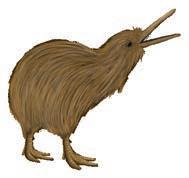
Independent practice
Patterns can be made by transforming shapes horizontally, vertically or diagonally
1 Describe these patterns.
Pattern
Description
e.g. The triangle has been reflected vertically.
f
FINAL
2 Continue this pattern and describe the way it grows.
3 Look at the way these patterns grow. Complete each pattern, then describe it.
FINAL
a Design a transformation pattern using this shape.
b Describe the way you made your pattern.
Extended practice
1 You can create designs in a few minutes with the help of a computer and a program such as Microsoft Word (or similar).
a Open a blank document. Make sure you can see the Insert menu bar.
b Click on the Shapes icon and choose an interesting 2D shape.
c Draw the shape at the top of the page by clicking and dragging.
d Copy the shape.
e Paste the shape.
f Use the arrow keys to move the shape so that its left edge joins the right edge of the first shape, like this:
g Repeat steps d–f as many times as you like.
2 This activity involves rotating copies of a simple shape on top of the original shape.
a Open a new blank document.
b Click on the Shapes icon and choose a double arrow.
c Draw the arrow on the page by clicking and dragging.
d Copy and paste the shape as you did in question 1.
e Use the arrow keys to move the shape so that it is exactly over the top of the first shape.
f Select the shape to change it. Then click on the Shape Format menu.
g Click on the Rotate menu and then on the More Rotation Options.
h Change the rotation amount from 0° to 30° and click OK.
i Copy, paste and move the new shape by repeating steps e–h.
j Repeat, increasing the angle of rotation by 30° each time. Rotate Rot ation: 30º
Unit 7: Topic 3
There are six types of angles:
Guided practice
1 Write the name of each type of angle.
Angles are measured in degrees (°).
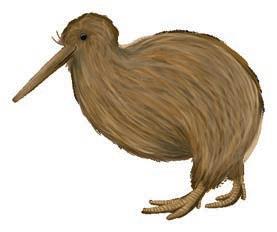
2 How do you know that this is an obtuse angle?
3 Use a pencil and ruler to draw each angle from the dot on its base line.
Independent practice
Angles are measured with a protractor. The base line of the protractor needs to be on the base line of the angle. You have to make sure you read the correct track. This angle is on the inside track:
1 Write the type and size of each angle.
2 Write the type of angle. Circle the best estimate for the size of the
3
Write an estimate for the size of each angle. Think about the type of angle. You could also think about how the size compares to a right angle.
Estimate
Estimate
4 Use a protractor to measure the size of each angle in question 3.
5 Use a protractor, pencil and ruler to draw the angle on each line. Start at the dot.
Extended practice
This diagram shows one method you can use to find the size of a reflex angle.
1 Without using a protractor, write the size of the reflex angle in this diagram.
2 Use a method of your choice to find the size of these reflex angles. 40º ?º
3 There are two angles
a Estimate the size of each angle. shown here.
Angle A estimate:
Angle B estimate:
b Explain how you estimated the size of each angle.
c Measuring just one of the angles, write the sizes of both angles.
Angle A =
Angle B =
d Explain how you found the size of the angle that you did not measure.
Unit 7: Topic 4 3D shapes
A 3D shape has height, width and depth. A polyhedron is a 3D shape that has flat faces. A cube is a polyhedron but a cylinder is not. (The plural of polyhedron is polyhedra.)
Guided practice
1 Prisms and pyramids are two types of polyhedra. They get their names from the shapes of their bases. Use the word bank to help you write the names of these polyhedra.
Cube (a polyhedron)
Cube (a polyhedron)
Cube (a polyhedron)
A cube has three sets of parallel (or opposite) faces.
Cylinder (not a polyhedron)
Cylinder (not a polyhedron)
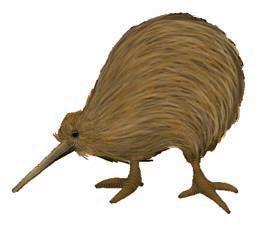
Cylinder (not a polyhedron)
Word bank triangular pyramid hexagonal prism square pyramid pentagonal prism rectangular prism octagonal prism triangular prism
2 The side faces of prisms are always rectangles. What 2D shape can you see on the side faces of all pyramids?
Independent practice
1 Complete these sentences.
a I know this is a polyhedron because
Cube (a polyhedron)
Cylinder (not a polyhedron)
b I know this is not a polyhedron because
2 Write the number of faces, edges and vertices on these 3D shapes. You could use actual 3D shapes to help with this activity.
3D object
Cube (a polyhedron) edge vertex face 3D object
of edge Number of vertices
of 3D object 3D object
Number of edge Number of vertices Name of 3D object 3D object Number of faces
pyramid Number of edge Number of vertices Name of 3D object 3D object Number of faces
pyramid
pyramid Number of edge Number of vertices Name of 3D object
pyramid Number of edge Number of vertices Name of 3D object
pyramid Number of edge Number of vertices Name of 3D object 3D object Number of faces
3D shape Number of faces Number of edges Number of vertices Name of 3D shape
Cylinder (not a polyhedron)
b. c.
A pyramid has one base. The top is called the apex. A prism has two bases but may sit on one of the side faces.
Hexagonal pyramid
One hexagonal base
3
Complete this table.
3D shape
3D object
Number of bases Base shape
Hexagonal prism
Two hexagonal bases
e. f.
a
b
c
d
e.g. a b c d
Side face shapeThe shape is sitting on:
Base shape Side face shape The object is sitting on: 3D object
Hexagonal pyramid
Number of bases 1
Base shape Side face shape The object is sitting on:
e.g. Hexagonal pyramid 1 hexagon triangles the base
Hexagonal pyramid
Square pyramid
Square pyramid
h. i.
Square pyramid
Triangular prism
Triangular prism
Triangular prism
Triangular pyramid
e.g. a b c d
Triangular prism
Triangular prism
Number of bases 1
hexagontrianglesthe base
hexagontrianglesthe base
Rectangular prism
Rectangular prism
Rectangular prism
4 A rectangular prism would open out to make a net like this: For which 3D shapes are these the nets?
This is the net for a . b
This is the net for a .
Extended practice
1 Drawing 3D shapes is difficult because you have to make a 2D drawing look as though it has depth. Try to draw these shapes on the isometric grid. The dotted lines show the “hidden” edges. It might take a few tries to make them look right.
a This is a: .
b This is a:
c This is a: .
2 Draw a sketch of a net for each of these 3D shapes. You may need extra paper for this activity.
3
Use paper or card to make an accurate 3D model of each shape.
Unit 8: Topic 1 Grid references
Grid references are a way of describing position. Grid references can mean the area inside a square or an exact point on the grid. The circle is at B1 on both grids. On a grid like Grid B, there can only be one object at each point.
Guided practice
1 What is the position of these shapes on the grids at the top of the page?
Grid A square: Grid B square:
Grid A triangle: Grid B triangle:
2 What are the positions of these shapes on Grid C?
a The diamond: b The star: c The triangle: d The circle:
To read a coordinate point, first go ACROSS the river then UP the mountain!
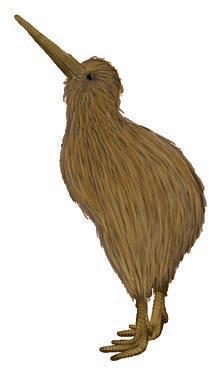
3 Draw the following on Grid C: a The letter O at A4 b A smiley face at B3 c The letter K at B4 d An oval at D2 e The letter R at B5 f The letter U at A5
4 Which shape has a different grid reference on Grid C and Grid D?
5 Draw the letter × at the following points on Grid D: B4 C3 D2 E1
6 Write a coordinate point that would continue the × s in a diagonal line.
Independent practice
Coordinate points are often written with two numbers, rather than a letter and a number. You read the number going across first, then the number going up. The numbers are in brackets, separated by a comma. The circle is at (1,0).
1 Write the grid references for:
a the star b the triangle c the diamond
2 Draw the following on Grid E.
3
square at (2,3)
b circles at (1,4) and (3,4) c stars at (1,2), (2,2) and (3,2)
a Write the first letter of your first name on an empty grid point.
b What is the grid reference for the letter you wrote?
4 When two coordinate points have an arrow between them, it means that you join them with a straight line. Complete the following.
a The coordinate points for drawing the triangle are: (1,5) (3,5) (2,8)
b The coordinate points for drawing the square are: (4,5)
5
a Draw a large rectangle on the grid lines below the triangle and the square.
b Write the coordinate points for drawing the rectangle. Remember to end the drawing back at the starting point.
7
a Write the coordinate points to show someone how to draw this letter N.
b Draw another capital letter using straight lines. Write the coordinate points to show someone how to draw the letter.
a Draw the following picture by plotting with dots and joining the coordinate points.
(1,1) (4,1) (4,4) (5,4)
(5,1) (8,1) (6,2) (6,6)
(8,4) (8,5) (6,7) (5,7)
(5,8) (7,8) (7,9)
(8,9) (8,10) (7,10) (7,11) (6,12) (3,12) (2,11) (2,10) (1,10) (1,9) (2,9)
(2,8) (4,8) (4,7) (3,7) (1,5) (1,4) (3,6) (3,2) (1,1) STOP!
b Draw a mouth: (3,10) (3,9) (6,9) (6,10).
c Draw a nose: (4,10) (5,10), then draw an oval shape around the line.
d Draw two eyes. What are the coordinate points?
Extended practice
1
Design a coordinate picture on the grid. Afterwards, you can give the instructions to someone so that they can draw the picture. Some things to think about:
• Don’t make the picture too complicated.
• Make sure the coordinate points are correct. (If you can’t follow them, nobody else will be able to!)
• Use straight lines where possible.
2
Write the instructions in the way that they were written on page 117.
Try following your instructions on a grid before you give them to somebody else.
Unit 8: Topic 2 Giving directions
The four main compass directions are north, south, east and west. To remember their position on a compass rose, some people use sayings such as “never eat slimy worms”.

Guided practice
1 The dog on the compass rose is north-east of the cat.
a Label the four empty arrows NE (north-east), SE (south-east), SW (south-west) and NW (north-west).
2 The teacher is at the centre of this classroom. Use the plan to find the answers.
a Who is north-east of the teacher ?
b Who is south-west of the teacher ?
c Use a compass direction to describe Sam’s position.
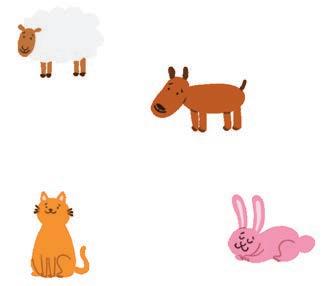

FINAL
b Draw a triangle at the SW point, a circle at the NW point and a square at the SE point.
3 It is not possible to describe Jack’s position using one of the eight compass directions, but we can use a grid reference. Jack is at B1.
a Use a grid reference to describe the position of Tran.
b Eva is at A2. Write her name on the plan.
c Choose a position to the east of Sam and write your initials in it.
d What is the grid reference for the position?
e Write Jo’s name in a position between Sam and Lucy. Use a compass direction to describe Jo’s position in relation to the teacher and a grid reference for Jo.
Independent practice
Use this map of Jo’s town for the following activities.
1 a In which direction would Jo go to get from home to the Swim centre?
b What is the grid reference for Tran’s house?
c Imagine you lived at the north end of Kakapo Road. Shade in the shortest route along the roads that would take you to the southern entrance of the Sports fields.
d Amy’s house is on Christchurch Parade. Using compass directions and street names, write instructions for the shortest route from Amy’s house to the Swim centre.
e True or false? Amy’s house is north-east of Jo’s house.
f The Magic Movie Theatre is north of the Swim centre on the right-hand side of Tieke Way. Draw and label it on the map.
g Write the grid reference for the north-eastern corner of Napier Road Primary School.
h Using compass directions and street names, write instructions to get from Tran’s house on Tieke Way to the school entrance on Penguin Way.
2
3
A legend (or key) gives information about places on a map. If a map has a scale, you can work out real-life distances. On this map, the treasure is at (4,1) and is 50 metres from the snake pit.
a Write a coordinate for the campsite.
b How far is the campsite from the treasure?
Campsite
Legend
S = Snake Pit
C = Crocodiles
P = Poisonous Plants
N = Nest of Scorpions
T = Treasure
Scale: 1 cm = 1 km
a Use the legend to mark these on the map: Big Bug Beach has a nest of scorpions near it. Tin Pot Cave is 6 km south-east of Snakesville. Spider Head is 4 km south of Snakesville. Cockroach Cliff is 7 km north of Spider Head.
b Shark Point is 5 km west of Snakesville. Mark its position with a dot and write “Shark Point” on the map.
4 a There is a curved track from Snakesville to Shark Point that misses the poisonous plants by going to the south of them. Draw the track on the map.
b Estimate the distance from Snakesville to Shark Point along the track you drew.
5 a Goanna Gorge is 2 km to the north-east of Spider Head. Mark it on the map with a dot and the letter G. Draw a straight road from Spider Head to Goanna Gorge.
b The Treasure is buried along a straight track 500 m south-east of Goanna Gorge. Mark it on the map with the letter T.
Snakesville
Extended practice
1 CAT stands for “Computer Artist’s Toy”. It moves according to directions given and traces a path with a pen. The CAT needs to be programmed to draw an octagon. The first two moves are shown. CAT is programmed to understand distance and compass directions.
a Write the steps that would complete the octagon.
Step 1. Move north 2 cm.
Step 2. Move north-east 2 cm.
b Follow your own directions to see if you draw an octagon. If you want your octagon to be accurate, you will need to use a protractor. Or your teacher may ask you to use a line tool in a computer program such as Microsoft Word.
2 Draw your own Treasure Island Map. Include a legend for some interesting places on the island, a scale and a direction indicator. Label the grid so that you can give grid references for the places on the map.
Step 2
Step 1
Unit 9: Topic 1 Collecting and representing data
Primary data is data gathered by you. Secondary data is data gathered by someone else.
Guided practice

A survey is an example of primary data. Data collected from the internet or a library is an example of secondary data.
1 The two main types of data that are collected are numerical and categorical Numerical data can be counted (or measured). Categorical data (such as where we like to go on holidays) is not numerical. Write “N” (for numerical) or “C” (for categorical) for the type of data that will be collected.
a What is your favourite pet?
c How tall are you?
b How many pets do you have?
d What is your favourite sport?
2 If you asked, “How many snacks do you eat a day?”, you would be collecting numerical data. Write a survey question about food that would enable you to collect categorical data.
3 If you asked, “What type of music do you like?”, you would be collecting categorical data. Write a survey question about music that would enable you to collect numerical data.
4 Year 6T took the noon temperature for 20 days: 19°, 18°, 19°, 20°, 19°, 20°, 20°, 20°, 19°, 18°, 20°, 19°, 20°, 19°, 18°, 20°, 18°, 17°, 19°, 20°
a What type of data did they collect?
b Complete the frequency table for the data.
c Complete the dot plot for the temperature data.
Noon time temperatures for 20 days 17º 18º19º 20º
d Is the temperature data primary or secondary? How do you know?
e What do you think the purpose of collecting this data is?
A common way to represent data is on a graph. There are several types of graphs. The type of graph used depends on what is being represented.
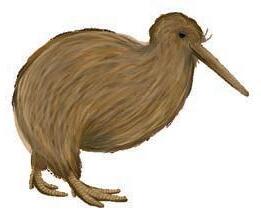
The graphs in questions 5 and 6 show numerical data.
Independent practice
1 This table shows the NRL top ten premiership winning teams.
a Complete the Total column. Transfer the totals to a spreadsheet (optional).
b Decide on a suitable type of graph to display the information. Use a separate piece of paper for this (or create a chart or graph on a spreadsheet).
Club Year started
Rabbitohs 1908
1908, 1909, 1914, 1918, 1925, 1926, 1927, 1928, 1929, 1931, 1932, 1950, 1951, 1953, 1954, 1955, 1967, 1968, 1970, 1971, 2014
Roosters 1908 1911, 1912, 1913, 1923, 1935, 1936, 1937, 1940, 1945, 1974, 1975, 2002, 2013, 2018, 2019
Dragons 1920 1941, 1949, 1956, 1957, 1958, 1959, 1960, 1961, 1962, 1963, 1964, 1965, 1966, 1977, 1979
Tigers 1908 1915, 1916, 1917, 1919, 1920, 1924, 1939, 1944, 1946, 1947, 1969
Sea Eagles 1946 1972, 1973, 1976, 1978, 1987, 1996, 2008, 2011
Total
Bulldogs 19351938, 1942, 1980, 1984, 1985, 1988, 1995, 2004
Broncos 1987 1992, 1993, 1997, 1998, 2000, 2006
Panthers 1966 1991, 2003, 2021, 2022, 2023
Magpies 19081930, 1934, 1948, 1952
Eels 19461981, 1982, 1983, 1986
Extended practice
Researchers believe that 10-year-old children have a vocabulary of 10 000 words, but it is very difficult to collect reliable data about the number of words anyone knows.
1 Without doing any research, write down three words that you think are used a lot in everyday writing.
2 Do some secondary data research to see if you are right. You need 100 words of a text.
a Skim through and make a mental note of any words that you think are used frequently.
• Write these common words down.
• Do an accurate tally of the number of times the words are used.
b Which three words are most commonly used?
c Compare your research with that of somebody else. How does it compare?
3 There are a lot of vowels used in the 40 words of this joke.
A monkey goes into a café and points to a picture of a cheese sandwich.
“That’s strange!” says one waitress to another. “A monkey is ordering a cheese sandwich.” “ I know!” says the monkey. “I usually order a hot dog.”
FINAL
a Find out how often each vowel is used. Make an accurate tally of the number for each vowel.
b How reliable do you think this data is as an indicator of the most frequently used vowels? Why?
Unit 9: Topic 2 Representing
and interpreting data
Two types of graphs used to represent data are line graphs and picture graphs. A line graph is only used to show how something changes over time, such as the amount of money in a piggy bank.
Guided practice
1 The graphs above show that the amount of money Tran had in week 1 was $5.
a By how much did it go up in week 2?
b In which week did Tran have the most money?
c Estimate the amount of money Tran had in week 4.
2
a Circle one of these statements to give your opinion:
• The line graph is easier to interpret.
• The picture graph is easier to interpret.
• Both graphs are just as easy to interpret.
b Give a reason for your opinion.
3 These are the amounts Tran had in weeks 5–8. Use the information to make a line graph and a picture graph.
• Week 5: $15
• Week 6: $20
• Week 7: $3
• Week 8: $18
A picture graph needs a key so that the data can be read or interpreted.

Independent practice Independent practice
1 These are Eva’s spelling scores out of 20 during the term. Represent the data on a line graph.
a Complete the numbering for the vertical axis and the horizontal axis.
b Write a title for the graph.
c Write appropriate labels for the horizontal and vertical axes.
d Plot the data, then join up each point.
2 a In which weeks did Eva score 100%?
b Describe the change in scores between weeks 5 and 7.
c In which week do you think Eva did not do her homework?
d True or false? Eva’s average score was more than 16 out of 20.
e Between which weeks was the rise in scores the biggest?
3
A Year 5 class was given some ice creams to sell. They held an ice-cream stall to raise money for the Year 6 Farewell.
a How many ice creams were sold on Monday?
b By how much did sales increase between Wednesday and Thursday?
Number of ice creams sold in one week




















Tues Wed Thurs
c What is the difference between the day with the most sales and the day with the least?











d Write a sentence or two about the ice-cream sales on Tuesday.
e What was the total number of ice creams sold during the week?
f The ice creams were 50c each. How much money did they make?
4 Look at the pie chart.
a Is the chart misleading? Why or why not?
FINAL
b Choose more appropriate data for the pie graph.
Extended practice
1 This information shows the number of points scored by each player (including the substitute) on a basketball team.
Sam 17 1919 14 16
Amy 87028
Tran 5842 11
Eva 1415 3 11 17
Lily 24103
Noah 6242 21
a Divide the total for each player by the number of games to find their average number of points per game. Write the average scores in the table.
b Use the data to create a graph of your choice on this grid, or present this information on a graph using a program such as Excel or Plotvar. Examples of questions you could focus on include:
• What were the highest totals for each player?
• How did Eva’s (or anyone else’s) scores change over the five games?
• What did the average scores look like after three games?
c Whose average score was the highest?
d Who scored the most points in a single game?
e Which player do you think spent most time on the sideline?
Give a reason for your answer.
Unit 10: Topic 1
Chance

Independent practice
If you guess heads or tails, there is just as much chance that you will be right as there is that you will be wrong.
In words: There is an even chance.
As a fraction: There is 1 2 a chance.
Guided practice
Will it be heads or tails?
As a percentage: There is a 50% chance.
As a decimal: There is a 0.5 chance.
Using the probability words certain, likely, even chance, unlikely and impossible, describe the chance of the following things happening.
1 a If I roll a six-sided die, it will land on an even number.
b A cow will read the news on TV tonight.
c Someone will fall over at lunchtime.
d Tuesday will follow Monday next week.
FINAL

2 The chance words in question 1 can be put on a number line. Write the other four words on the line: certain, likely, unlikely, impossible. Draw arrows to the positions you think are appropriate.
Even chance
3 There is 1 4 of a chance that the spinner will land on red. Which fraction describes the chance of the spinner landing on blue?
4 This spinner has a 90% chance of landing on red. What is the percentage chance of it landing on green?
5 The chance of this spinner landing on yellow is 0.1. What chance is there that it will land on:
Independent practice
1 Read the descriptions of the chance of these events occurring.
a Convert the chance words to a decimal to describe the chance of the event occurring.
b Fill in the gaps where necessary.
AIt is impossible to run 100 metres in two seconds.
BIt is almost impossible for me to win ten million dollars.
CIt is likely that I will see a movie at the weekend.
DThere is a better than even chance that I will like the movie.
EIt is very likely that
FThere is an even chance that the next baby born will be a girl.
GThere is less than an even chance that I will go swimming tomorrow.
HIt is almost certain that
IIt is certain that
JIt is very unlikely that
KIt is unlikely that
2 Place the letter for each description in question 1 at an appropriate place on this number line.
3 Which do you think is more accurate when describing chance situations: number values or chance words?
4 Which spinners have the following chance of landing on blue?
a 75% chance
b 1 out of 2 chance
c 1 3 of a chance
d 100% chance
5 Colour this spinner so that the following probabilities are true:
Extended practice
• There is 0.1 chance for yellow.
• There is 0 chance for white.
• There is 2 10 chance for blue.
• There is 0.4 of a chance for green.
• There is 3 10 chance for red.
6 Each of these spinners can land on red, but there is not the same chance for each of them.
a Order the spinners from least likely to most likely to land on red.
b Write a number value for the chance of each spinner landing on red.
7 Imagine this situation. There are 100 marbles in a bag. You know they are either red or blue. You pick out 10 marbles and find that you have 2 red ones and 8 blue ones. How many of the 100 marbles are likely to be:

8 Which of these does not show the chance of choosing a blue marble from this bag? Circle one.
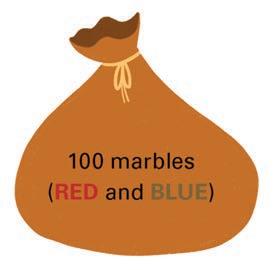
Spinner A: Spinner B: Spinner C: Spinner D: Spinner E:
100 marbles (RED and BLUE)
100 marbles (60 RED and 40 BLUE)
Extended practice
1 In a pack of 52 playing cards (without the joker), there are four suits (or types): diamonds, spades, clubs and hearts. Imagine the 52 cards are face-down.
a Express the chance of picking up a diamond as a fraction.
b Name a type of card that you would have half a chance of picking up.

c There are four “picture” cards in each suit. E xpress the chance of picking up a picture card as a fraction.
d If you picked up 20 cards, how many could you expect to be hearts?
2 Chloe invented a board game. The number of squares you move depends on the colour of the spinner you land on. The more squares you move, the less chance there is of landing on that colour. This is how it works:
• Land on red: Move 1 square
• Land on blue: Move 2 squares
• Land on green: Move 4 squares
• Land on gold: Move 6 squares
a Colour the spinner so that there is the greatest chance of landing on red, less chance for green, even less chance for blue and the least chance of all for gold.
b Describe the chance of landing on each colour as a fraction and a decimal. Red: Blue: Green: Gold:
3 The Jellybean Company always put 20 red ones, 10 green ones, 25 white ones, 20 yellow ones, 10 purple ones, 10 pink ones and 5 black ones in each pack.
a Joel loves the yellow ones. He takes one from his pack without looking. What is the chance that he will take a yellow jellybean?
b Which colour is there a quarter of a chance Evie will take out?
c Lachlan’s favourites are red and green. What fraction of a chance does he have of getting one of his favourites?
d Which colour jellybean has a 1-in-20 chance of being chosen by Charlie?
Unit 10: Topic 2
Chance experiments
There is a 1-in-2 chance of choosing correctly when a coin is tossed. That means that if you toss the coin four times the chances are that it will land twice on heads and twice on tails. However, does that mean it will happen?

Guided practice
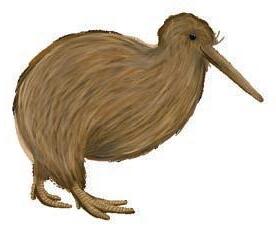
1 Imagine a coin lands on heads 10 times in a row. Circle the chance of it landing on tails next throw.
2 a Predict the result if you toss a coin 10 times. Heads: Tails:
b Toss a coin 10 times. Record the results.
H or T?
c Compare your prediction with what actually happened. Explain the difference.
3 There is not a 1-in-2 chance of rolling a 4 on a 6-sided dice.
a Give a number value for the chance of the dice landing on 4:
b If a dice lands on 4 ten times in a row, what is the chance of it landing on 4 on the eleventh throw?
4 a Predict the result if you roll a dice 12 times. One: Two: Three: Four: Five: Six:
b Roll a dice 12 times. Record the results.
c Was it more difficult to predict the results for the coin or the dice? Try to give an explanation. It’s sure to land on tails next time, isn’t it?
Result
Independent practice
For this experiment, you will need a spinner numbered from 1 to 4.
1 a Circle the number values that describe the chance of the spinner not landing on number 4.
3 4 7 out of 10 3 out of 4 75% 0.75
b If you spin the spinner four times it should land on each number once. Do you think that will happen? Give a reason for your answer.
2 Decide on the number of spins that is necessary to obtain accurate results: 12? 20? 40?
(The number needs to be a multiple of 4.) Operate the spinner and tally the results in the table.
Tally of the number of times it landed.
3 Write a few sentences about the results of the experiment. Think about things such as:
• Did it turn out how I expected?
• Why did it not land the same number of times on each number?
• If I started from the beginning again, would the results be the same?
• If I doubled the number of spins, would it be very different?
• How do my results compare to someone else’s?
4 The way an experiment is set up can affect the results. If you made a five-sided spinner and numbered it like this, how would it affect the chance for each number?
Number on the spinner 1234
5 For this experiment, you will need two coins. You could also use a site such as random.org to flip the coins virtually. There are three results that can occur. Fill in the table to show the possible results.
When you toss two coins the result can be:
They both land on heads.
6 Predict the results after 40 tosses of the coins. Two heads: Two tails: Heads and tails:
7 Carry out the experiment. Tally and record the results in the table.
Tally of the number of times they landed like that.
Write a few sentences commenting on the results of your experiment.
9 Each result did not have the same chance of occurring in the last experiment. Explain why by looking at the diagram.
Result: heads and tailsResult: two tails
two heads
Ways the coins landed
Two heads
Two tails Heads and tails
Extended practice
1 We can give a number value for the chance of this spinner not stopping on white. Write the number value in as many different ways as you can.
2 Circle the statement that best describes the chance of this spinner stopping on yellow. about 5% about 15% about 25% about 50% about 75%
3 Imagine the spinner in question 2 stops on yellow 10 times in a row. Circle the chance of this spinner stopping on yellow next time.
4 Draw seven equal squares on a piece of paper or card. Write the word MINIMUM, with one letter per square.
Cut out the seven squares. Turn them over. Move them around.
a What is the chance of picking up the letter M first go?
b Have the letters N and U facing up and the other papers facing down. Describe the chance of picking up a letter I first go.
c Put all the papers face-down and shuffle them around. Pick up two without looking. There might be two letter M s. What are all the possibilities?
5 If you shuffled the seven cards and chose a card at random, 42 times, how many times would you expect each letter to appear?
Glossary
acute angle An angle that is smaller than a right angle or 90 degrees.
right angle
addition The joining or adding of two numbers together to find the total. Also known as adding, plus and sum. See also vertical addition += 3 and 2 is 5
algorithm A process or formula used to solve a problem in maths.
Examples: horizontal vertical algorithms algorithms TO 24 + 13 37
24 + 13 = 37
analog time Time shown on a clock or watch face with numbers and hands to indicate the hours and minutes.
angle The space between two lines or surfaces at the point where they meet, usually measured in degrees.
75-degree angle
anticlockwise Moving in the opposite direction to the hands of a clock.
area The size of an object’s surface.
Example: It takes 12 tiles to cover this poster.

area model A visual way of solving multiplication problems by constructing a rectangle with the same dimensions as the numbers you are multiplying and breaking the problem down by place value.
6 × 10 = 60
6 × 8 = 48 so
6 × 18 = 108 6 10 8
array An arrangement of items into even columns and rows to make them easier to count.
balance scale Equipment that balances items of equal mass; used to compare the mass of different items. Also called pan balance or equal arm balance
base The bottom edge of a 2D shape or the bottom face of a 3D shape.
capacity The amount that a container can hold.
Example: The jug has a capacity of 4 cups. base 4 cups 3 cups 2 cups 1 cup

Cartesian plane A grid system with numbered horizontal and vertical axes that allow for exact locations to be described and found.
column graph A way of representing data using columns or bars to show the values of each variable.
categorical variables The different groups that objects or data can be sorted into based on common features.
Example: Within the category of ice-cream flavours, variables include:



centimetre or cm A unit for measuring the length of smaller items.

Example: Length is 80 cm.
circumference The distance around the outside of a circle.
clockwise Moving in the same direction as the hands of a clock.
common denominator Denominators that are the same. To find a common denominator, you need to identify a multiple that two or more denominators share.
Example: 1 2 + 1 4 + 1 8 = 4 8 + 2 8 + 1 8 = 7 8
compensation method A way of solving a problem that involves rounding a number to make it easier to work with, and then paying back or “compensating” the same amount.
Example: 24 + 99 = 24 + 100 – 1 = 123
composite number A number that has more than two factors, that is, a number that is not a prime number.
cone A 3D shape with a circular base that tapers to a point.
coordinates A combination of numbers or numbers and letters that show location on a grid map.
vanilla chocolate strawberry
corner The point where two edges of a shape or object meet. Also known as a vertex corner
degrees Celsius A unit used to measure the temperature against the Celsius scale where 0°C is the freezing point and 100°C is the boiling point.
denominator The bottom number in a fraction, which shows how many pieces the whole or group has been divided into.

cross-section The surface or shape that results from making a straight cut through a 3D shape.
cube A rectangular prism where all six faces are squares of equal size.
cubic centimetre or cm3 A unit for measuring the volume of smaller objects.
Example: This cube is exactly 1 cm long, 1 cm wide and 1 cm deep.
cylinder A 3D shape with two parallel circular bases and one curved surface.
data Information gathered through methods such as questioning, surveys or observation.
decimal fraction A way of writing a number that separates any whole numbers from fractional parts expressed as tenths, hundredths, thousandths and so on. 1
Example: 1.9 is the same as 1 whole and 9 parts out of 10 or 1 9 10
diameter A straight line from one side of a circle to the other, passing through the centre point.
digital time Time
shown on a clock or watch face with numbers only to indicate the hours and minutes.
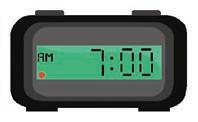
division/dividing The process of sharing a number or group into equal parts, with or without remainders.
dot plot A way of representing pieces of data using dots along a line labelled with variables.
Favourite pets cat dog rabbit
double/doubles Adding two identical numbers or multiplying a number by 2.
Example: 2 + 2 = 4 4 × 2 = 8
duration How long something lasts.
Example: Most movies have a duration of about 2 hours. 3 4
edge The side of a shape or the line where two faces of an object meet.
factor A whole number that will divide evenly into another number.
Example: The factors of 10 are 1 and 10 2 and 5.
equal Having the same number or value.
Example: Equal size Equal numbers
equation A written mathematical problem where both sides are equal.
Example: 4 + 5 = 6 + 3
equilateral triangle A triangle with three sides and angles the same size.
equivalent fractions Different fractions that represent the same size in relation to a whole or group.
financial plan A plan that helps you to organise or manage your money.
flip To turn a shape over horizontally or vertically. Also known as reflect vertical flip
fraction An equal part of a whole or group.
Example: One out of two parts or 1 2 is shaded.
frequency The number of times a particular outcome occurs in a chance experiment.
function machine A machine that can be programmed to do the same thing to any number that is fed into it.
gram or g A unit for measuring the mass of smaller items. There are 1000 g in 1 kg.
estimate A thinking guess.
even number A number that can be divided equally into 2.
Example: 4 and 8 are even numbers.
face The flat surface of a 3D shape.
graph A visual way to represent data or information.
GST or Goods and Services Tax A tax, such as 15%, that applies to most goods and services bought in New Zealand.
Example: Cost + GST (15%) = Amount you pay: $10.00 + $1.50 = $11.50
hexagon with six sides.
horizontal going straight across.

horizontal line
improper fraction A fraction where the numerator is greater than the denominator, such as 3 2
integer A whole number. Integers can be positive or negative.
inverse operations Operations that are the opposite or reverse of each other. Addition and subtraction are inverse operations.
Example: 6 + 7 = 13 can be reversed with 13 – 7 = 6
invoice A written list of goods and services provided, including their cost and any GST.
jump method A way to solve number problems that uses place value to “jump” along a number line by hundreds, tens and ones.
Example: 16 + 22 = 38
kilogram or kg A unit for measuring the mass of larger items.

kilometre or km A unit for measuring long distances or lengths.
irregular shape A shape in which the sides are not all the same length and the angles are not all the same size.
isosceles triangle A triangle with two sides and two angles of the same size.
kite A four-sided shape where two pairs of adjacent sides are the same length.
legend A key that tells you what the symbols on a map mean.



length The longest dimension of a shape or object.


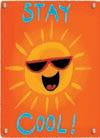
line graph A type of graph that joins plotted data with a line.
litre or L A unit for measuring the capacity of larger containers.
Example: The capacity of this bucket is 8 litres.
mass How heavy an object is.
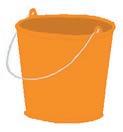

Example: 4.5 kilograms 4.5 grams
method A way to solve a problem. In maths, you can often use more than one strategy to get the right answer.
Example: 32 + 27 = 59
Jump method
Split method
30 + 2 + 20 + 7 = 30 + 20 + 2 + 7 = 59
metre or m A unit for measuring the length or height of larger objects.
millimetre or mm A unit for measuring the length of very small items or to use when accuracy of measurements is important.
cm123
There are 10 mm in 1 cm.
FINAL
mixed number A number that contains both a whole number and a fraction.
Example: 2 3 4
multiple The result of multiplying a particular whole number by another whole number.
Example: 10, 15, 20 and 100 are all multiples of 5.
near doubles A way to add two nearly identical numbers by using known doubles facts.

milligram or mg A unit for measuring the mass of lighter items or to use when accuracy of measurements is important.
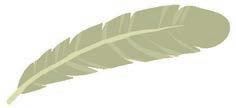
700 mg
millilitre or mL A unit for measuring the capacity of smaller containers.

Example: 4 + 5 = 4 + 4 + 1 = 9
net A flat shape that when folded up makes a 3D shape.
number line A line on which numbers can be placed to show their order in our number system or to help with calculations.
0102030405060708090100
number sentence A way to record calculations using numbers and mathematical symbols.
Example: 23 + 7 = 30
numeral A figure or symbol used to represent a number.
Examples: 1 – one 2 – two 3 – three
numerator The top number in a fraction, which shows how many pieces you are dealing with.
obtuse angle An angle that is larger than a right angle or 90 degrees but smaller than 180 degrees.
outcome The result of a chance experiment.
Example: The possible outcomes if you roll a dice are 1, 2, 3, 4, 5 or 6.
parallel lines Straight lines that are the same distance apart and so will never cross.
parallelparallelnot parallel
parallelogram A four-sided shape where each pair of opposite sides is parallel.
octagon A 2D shape with eight sides.
odd number A number that cannot be divided equally into 2.
Example: 5 and 9 are odd numbers.
operation A mathematical process. The four basic operations are addition, subtraction, multiplication and division.
origin The point on a Cartesian plane where the x -axis and y -axis intersect.
pattern A repeating design or sequence of numbers.
Example: Shape pattern
Number pattern 2, 4, 6, 8, 10, 12
pentagon A 2D shape with five sides.
per cent or % A fraction out of 100.
Example: 62 100 or 62 out of 100 is also 62%
perimeter The distance around the outside of a shape or area.
Example: Perimeter = 7 m + 5 m + 10 m + 3 m + 6 m = 31 m
picture graph A way of representing data using pictures so that it is easy to understand.
Example: Favourite juices in our class

place value The value of a digit depending on its place in a number.
27 4 8
27 4 86
27 4 863
27 4 8631
polygon A closed 2D shape with three or more straight sides.
polygons not polygons
polyhedron (plural: polyhedra) A 3D shape with flat faces. Not polyhedra polyhedra
prism A 3D shape with parallel bases of the same shape and rectangular side faces.
triangular prism rectangular prism hexagonal prism triangular prism rectangular prism hexagonal prism
FINAL
polyhedra not polyhedra
power of The number of times a particular number is multiplied by itself.
Example: 4 3 is 4 to the power of 3 or 4 × 4 × 4.
prime number A number that has just two factors – 1 and itself. The first four prime numbers are 2, 3, 5 and 7.
probability The chance or likelihood of a particular event or outcome occurring.
Example: There is a 1 in 8 chance this spinner will land on red.
protractor An instrument used to measure the size of angles in degrees.
pyramid A 3D shape with a 2D shape as a base and triangular faces meeting at a point.
quadrant A quarter of a circle or one of the four quarters on a Cartesian plane.
quadrant
quadrant
quadrilateral Any 2D shape with four sides.
radius The distance from the centre of a circle to its circumference or edge.
reflect To turn a shape over horizontally or vertically. Also known as flipping vertical reflection horizontal reflection
reflex angle An angle that is between 180 and 360 degrees in size.
regular shape A shape in which all the sides are the same length and all the angles are the same size.
remainder An amount left over after dividing one number by another.
Example: 11 ÷ 5 = 2 r1
rhombus A 2D shape with four sides, all of the same length and opposite sides parallel.
rotational symmetry A shape has rotational symmetry if it fits into its own outline at least once while being turned around a fixed centre point.
right angle An angle of exactly 90 degrees.
right-angled triangle A triangle where one angle is exactly 90 degrees.
rotate Turn around a point.
round/rounding To change a number to another number that is close to it to make it easier to work with.
229 can be rounded up to the nearest 10 230 OR rounded down to the nearest 100 200
scale A way to represent large areas on maps by using ratios of smaller to larger measurements.
Example: 1 cm = 5 m
scalene triangle A triangle where no sides are the same length and no angles are equal.
sector A section of a circle bounded by two radius lines and an arc.
semi-circle Half a circle, bounded by an arc and a diameter line.
skip counting Counting forwards or backwards by the same number each time.
Examples:
Skip counting by fives: 5, 10, 15, 20, 25, 30
Skip counting by twos: 1, 3, 5, 7, 9, 11, 13
slide To move a shape to a new position without flipping or turning it. Also known as translate
sphere A 3D shape that is perfectly round.
split method A way to solve number problems that involves splitting numbers up using place value to make them easier to work with.
Example: 21 + 14 = 20 + 10 + 1 + 4 = 35
square centimetre or cm2
A unit for measuring the area of smaller objects. It is exactly 1 cm long and 1 cm wide.
square metre or m2 A unit for measuring the area of larger spaces. It is exactly 1 m long and 1 m wide.
square number The result of a number being multiplied by itself. The product can be represented as a square array.
Example: 3 × 3 or 32 = 9
straight angle An angle that is exactly 180 degrees in size.
180º
subtraction The taking away of one number from another number. Also known as subtracting, take away, difference between and minus. See also vertical subtraction
Example: 5 take away 2 is 3
survey A way of collecting data or information by asking questions.
Strongly agree Agree Disagree Strongly disagree
symmetry A shape or pattern has symmetry when one side is a mirror image of the other.
table A way to organise information that uses columns and rows.
tally marks A way of keeping count that uses single lines, with every fifth line crossed to make a group.
term A number in a series or pattern.
Example: The sixth term in this pattern is 18.
369 12 15 18 21 24
tessellation A pattern formed by shapes that fit together without any gaps.

thermometer An instrument for measuring temperature.
three-dimensional or 3D A shape that has three dimensions –length, width and depth. 3D shapes are not flat.
timeline A visual representation of a period of time with significant events marked in.
trapezium A 2D shape with four sides and only one set of parallel lines.
triangular number A number that can be organised into a triangular shape. The first four are: 1 3 6 10
FINAL
two-dimensional or 2D A flat shape that has two dimensions –length and width. turn Rotate around a point.
unequal Not having the same size or value.
Example: Unequal size Unequal numbers
Unequal sizeUnequal numbers value How much something is worth.
Example: This coin is worth 10c. This coin is worth $1.
translate To move a shape to a new position without flipping or turning it. Also known as slide.
vertex (plural: vertices) The point where two edges of a shape or object meet. Also known as a corner
vertical At a right angle to the horizon or straight up and down.

vertical addition A way of recording addition so that the place value columns are lined up vertically to make calculation easier.
vertical subtraction A way of recording subtraction so that the place value columns are lined up vertically to make calculation easier.
volume How much space an object takes up.
Example: This object has a volume of 4 cubes.
whole All of an item or group.
Example: A whole
A whole group
width The shortest dimension of a shape or object. Also known as breadth
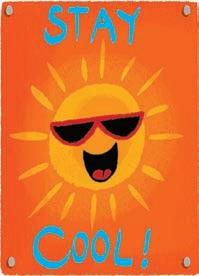
x-axis The horizontal reference line showing coordinates or values on a graph or map.
of people
y -axis The vertical reference line showing coordinates or values on a graph or map. Number of people
Unit 1: Topic 1
d 80 80
e 44
2 a 9307 b 25 046 c 102 701
3 a two thousand, eight hundred and sixty
b thirteen thousand, four hundred and sixty-five
c twenty-eight thousand, seven hundred and five
Independent practice
1 a 3000 b 8000 c 20 000
d 100 000 e 2 000 000
2 a fifty-three thousand, two hundred and seven
b forty-eight thousand and five
c twenty-nine thousand, four hundred and twenty-five
d one hundred and thirty-five thousand, two hundred and eighty-four
e two million, three hundred and ninety-nine thousand, five hundred and seventeen
3 a 86 231 b 142 000
c 656 308 d 4 105 921
4 25 790
5
11 a Student shades 3rd triangle from the left.
b Student shades 3rd triangle from the left.
c Student shades 2nd triangle from the left.
14 Teacher to check. 4652, 5217, 5176, etc.
3 (Actual population: 49 168) 46 189, 46 198, 46 819, 46 891, 46 918, 46 981, 48 169, 48 196, 48 619, 48 691, 48 916, 48 961, 49 168,
Unit 2: Topic 1
Guided practice
700 000
80 000 5000 5000 300 300 20 20 11
6 a two million, five hundred and eighty-three thousand, nine hundred and forty-two
b six million and fifty-four thousand, four hundred and thirty-one
7 a 5 487 204
b 6 760 715
8 98 4 142, 4 087 845, 4 591 043, 4 605 812, 4 605 924
9 a 20 000 + 5000 + 100 + 20 + 3
b 6 000 000 + 500 000 + 60 000 + 3000 + 300 + 80 + 2
c 6000 + 4
d 100 000 + 20
e 800
+ 60
Independent practice
1 Problem Using rounding it becomes: Now I need to: Answer
a 56 + 4156 + 40 = 96add 1 97
b 25 + 6925 + 70 = 95 take away 1 94
c 125 + 62125 + 60 = 185 add 2 187
d 136 + 198 136 + 200 = 336 take away 2 334
e 195 + 249195 + 250 = 445 take away 1 444
f 1238 + 5011238 + 500 = 1738add 1 1739
g 1645 + 1998 1645 + 2000 = 3645 take away 2 3643
2 Students may choose a different method to the one suggested. Teachers may wish to ask students to explain (perhaps to the group) how they arrived at one or two of the answers.
a 134 b 125 c 371
d 2409 e 2950 f 2566
3 Students may choose a different method to the one suggested. Teachers may wish to ask students to explain (perhaps to the group) how they arrived at one or two of the answers.
a 163 b 211
c 2035 d 3906
4 Problem
+
c 5125 +
d 7114 +
2564 +
5 Teachers may wish to ask students to explain (perhaps to the group) how they arrived at some of the answers.
a 903 b 2980 c 6027
d 4998 e 3501 f 1483
g 4998 h 5490
Extended practice
1 a 2200 b 1500 c 4800
d 4500 e 8900 f 3800
g 600 000 h 200 000
2 a 3700 m b 300 m
c 800 km (800 000 m)
3 a $1
b the ball (99c rounds to $1)
Unit 2: Topic 2
Guided practice
1 a 49 b 274
c 498 d 4866
2 a 86 b 28 4
c 425 d 917
3 a 386 b 4623 c 47 823
d 75 120 e 700 131
Independent
practice
1 a 123 b 1234 c 12 345
d 123 456 e 121 f 2332
g 34 543 h 456 654 i 111
j 2222 k 33 333 l 444 444
2 a 90 b 820 c 815
d 1320 e 2307
3 a No. (Teachers may ask students to justify their response, e.g. the answer is not a reasonable one because $300 + $200 + $1000 + $100 + $200 = $1800.)
b $1792
4 a 251 b 1065 c 1017
d 24 4 e 1140 f 1543
g 4027 h 38 373 i 62 070 j 12 257
Extended practice
1 There are two possible answers: 335 or 4 35. Look for students who solve the problem systematically. The realistic addends for 335 are 319 + 16 and 309 + 26 although 329 + 06 will give the same answer.
Addends for 435 are:
399 + 36 389 + 46
379 + 56 369 + 66
359 + 76 349 + 86
339 + 96
2 Multiple answers are possible. Teachers may wish to ask students to use a calculator to check the total. An easy solution would be to subtract 1 from the average for the first game and add 1 to the average for the second. Then subtract 2 from the average for the third game and add 2 for the fourth, and so on.
3 The answer is 123 456.
Unit 2: Topic 3
Guided practice
1
–
3 Answers will vary. A simple solution is to count up to $5 from $2.45 and the $2.55 then becomes the price of the item. 2 Problem
a 257 – 126
b 548 – 224
=
=
c 765 – 4 42 442 =
878 – 236 236 =
+
+
+
+
+
+
+ 30 +
–
e 999 – 75 3 753 = 700 + 50 + 3999 –
Independent practice
1 Students may choose a different method from the one suggested. Teachers may wish to ask students to explain (perhaps to the group) how they arrived at one or two of the answers.
a 25 b 155 c 316
d 1236 e 3246
2 Students may choose a different method from the one suggested. Teachers may wish to ask students to explain (perhaps to the group) how they arrived at one or two of the answers.
a 21 b 121 c 422
d 2402 e 3323
3 a What is 776 – 423? 776
– 3– 20 356 376 353 – 400
Answer: 776 – 423 = 353
b What is 487 – 264? 287 227 223 487 – 200 – 4 – 60
Answer: 487 – 264 = 223
c What is 1659 – 536? 1159 1129 1123 1659 – 6 – 30 – 500
Answer: 1659 – 536 = 1123
4 Teachers may wish to ask students to explain (perhaps to the group) how they arrived at one or two of the answers.
a $2.50 b $1.25 c $6.50
d $5.55 e $ 4.65 f $7.85
5 Teachers may wish to ask students to explain (perhaps to the group) how they arrived at one or two of the answers.
a 43 b 22 c 65
d 33 e 115 f 110
6 Teachers may wish to ask students to explain (perhaps to the group) how they arrived at one or two of the answers.
a 70 b 51 c 57 d 75 e 295 f 550
Extended practice
1 1 hour 35 minutes or 95 minutes
2 Answers will vary. Teachers may wish to ask students to explain (perhaps to the group) how they arrived at their answers. One simple solution is to start with a round number, say 100, and the other number is then 157. The other solutions could then be arrived at by adding 1 to each number (101 and 158, 102 and 159, etc.).
3 A $5 banknote was used. $2.60 was spent.
4 3838
Look for students applying the process of rounding. A simple method is to round 397 to 400. 4235 – 400 = 3835. 3 is added back to the number, giving an answer of 3838.
5 Bill: $7657, Ben: $7850
6 Teacher to check, e.g. 623 – 545 = 78, 633 – 555 = 78 and 643 – 565 = 78. Look for students who see the pattern of increasing each of the tens by one.
Unit 2: Topic 4
Guided practice
1 a 49 b 116 c 219 d 407 e 6126 f
h
k
Independent practice
i
1 a 321 b 4 32 c 543 d 654 e 765
2 a 1234 b 2345 c 3456 d 4567 e 5678 f 6789 g 9876 h 8765
3 a 11 111 b 22 222 c 33 333 d 44 444 e 55 555 f 66 666
4 764 321 – 123 467 = 640 854
5 724
6 a first option: 124 b second option: 6194 c first option: 7258
7 a 268 b 258 c 425 d 148 e 369 f 818 g 13 677 h 385 926
Extended practice
1 Multiple answers are possible. Look for students who understand that the lowest five-digit numbers that have a difference of 999 must be around 11 000 and 10 000. The lowest three possibilities are: 10 999 – 10 000; 11 000 – 10 001; 11 001 – 10 002
2 a 36 831 b 11 812 c 56 149 d 25 000
3 978 mm
Unit 2: Topic 5
Guided practice 1 abcdef totototohtohto × 78691419 10 70806090140190
2 a 15 m b 22 L
c 45 t d $17 (or $17.00) e 38 cm f 36 m
g $27.50 (or $27.5)
3 a 1400 b 1700 c 1300
d 2700 e 2300 f 4500
g 6400 h 370 m i $125
Independent practice
1 a 6 × 3 tens = 18 tens; 18 tens = 180
b 9 × 2 tens = 18 tens = 180 9 × 3 tens = 27 tens = 270
c 8 × 2
2 a 10, 20, 40 b 24, 48, 96
c 30, 60, 120 d 100, 200, 400 e 80, 160, 320
3 Problem Double and halve Answer
3 × 14 6 × 7 42
5 Teachers may wish to ask students to explain (perhaps to the group) how they arrived at one or two of the answers.
a 180 b 1400 c 25 m
d 340 e 280 f 750
g 104 h 360 i $17.50
j 480
Extended practice
1 × 15 × 10Halve
e.g. 12120 60 120 + 60 = 18012 × 15 =
a 16160 80 160 + 80 = 24016 × 15 =
b 14140
c 20200
d
e 25250 125 250 + 125 = 37525 × 15 =
2 Choice 2 is the better choice. Because of doubling, the 4-weekly amounts are 40c + 80c + $1.60 + $3.20 + $6.40 + $12.80 + $25.60 + $51.20 + $102.40 + $204.80 + $409.60 + $819.20, making a total for the year of $1638.
3 The total number of pages is 330. Look for students who use time-saving methods. For example, you multiply 48 × 5; possible method: 48 × 10 = 480. Half of 480 = 240. Then you double 45 = 90. 240 + 90 = 330.
Unit 2: Topic 6
Guided practice
1 7 × 34 = 7 × 30 + 7 × 4 = 210 + 28 = 238
2 5 × 28 = 5 × 20 + 5 × 8 = 100 + 40 = 140
Independent practice
1 6 × 32 = 6 × 30 + 6 × 2 = 180 + 12 = 192
2 5 × 35 = 5 × 30 + 5 × 5 = 150 + 25 = 175
3 7 × 48 = 7 × 40 + 7 × 8 = 280 + 56 = 336
Guided practice
1 a 172 b 195 c 58
d 64 4 e 152
2 a 250 b 568 c 759
d 975 e 2490 f 696
g 1425 h 6 492 i 6360 j 8692 k 9856
Independent practice
1 a 6492 b 6936 c 7548
d 21 150 e 36 978 f 43 076
g
j 222 633
1
c 18 4 944 km d 176 008 km
e Yes, 100 × 10 000 = 1 million. (Exact
2 a 13 020 points
b 152 640 points
c 130 464 points
3 There is more than one method that students could use to solve the problem. Teachers may wish to ask students to discuss how they intend to solve it. Students may opt to double the distance (651 × 2) to find the length of a return journey and then multiply 1302 by 14. Others may choose to multiply 651 by 14 and double the answer.
A third method could be to multiply 651 by 7 days, doubling the answer because there are two trips per day and finally doubling again for the return trips. The total distance is 18 228 km.
Unit 2: Topic 7
Guided practice
1 a 68 ÷ 2 is the same as 60 ÷ 2 and 8 ÷ 2
60 ÷ 2 = 30
8 ÷ 2 = 4
So 68 ÷ 2 = 30 + 4 = 34.
b 69 ÷ 3 is the same as 60 ÷ 3 and 9 ÷ 3
60 ÷ 3 = 20
9 ÷ 3 = 3
So 69 ÷ 3 = 20 + 3 = 23.
c 84 ÷ 2 is the same as 80 ÷ 2 and 4 ÷ 2
80 ÷ 2 = 40 4 ÷ 2 = 2
So 84 ÷ 2 = 40 + 2 = 42.
d 124 ÷ 4 is the same as 100 ÷ 4 and 24 ÷ 4
100 ÷ 4 = 25
24 ÷ 4 = 6
So 124 ÷ 4 = 25 + 6 = 31.
e 122 ÷ 2 is the same as 100 ÷ 2 and 22 ÷ 2
100 ÷ 2 = 50
22 ÷ 2 = 11
So 122 ÷ 2 = 50 + 11 = 61.
f 145 ÷ 5 is the same as 100 ÷ 5 and 45 ÷ 5
100 ÷ 5 = 20
45 ÷ 5 = 9
So 145 ÷ 5 = 20 + 9 = 29.
Independent practice
Note: some students may choose to bypass this written method and solve some or all of the problems using mental methods.
1 a 14 b 18 c 17 d 13
e 24 f 12 g 19 h 19
i 14 j 29 k 12 l 13
2 a 117 b 112 c 217 d 425
e 116 f 318 g 117 h 114
i 337 j 115 k 215 l 224
m 126 n 113 o 4 49 p 114
3 a 87 b 54 c 48 d 34
e 22 f 67 g 54 h 57
i 52 j 47 k 85 l 93
m 98 n 79 o 92 p 99
4 a 14 r1 b 25 r1 c 15 r2
d 13 r2 e 115 r3 f 317 r1
g 116 r2 h 111 r5
5 a 392 1 2 b 214 1 4
c 154 1 5 d 280 1 2
Extended practice
1 a 19 r2 b 24
c 24 r1 d 55 r1
2 Students’ own answers. Look for students who use remainders appropriately and who recognise that doughnuts can be easily split (whereas marbles cannot) and that dollars can be divided into dollars and cents.
a 3 1 2 each
b four marbles each and one is left over
c $6.50
3 1 person 8 people Flour 36
4 32 (3000 ÷ 96 = 31 r24, 31.25 or 311 4 , so 32 boxes are needed)
Unit 2: Topic 8
Guided practice
1 a 1 ,2, 4, 8 b 1, 5
c 1, 3, 9 d 1, 2, 3, 6
e 1, 2 f 1, 2, 4
g 1, 7 h 1, 3
2 a 3, 6, 9, 12, 15, 18, 21, 24, 27, 30
b 6, 12, 18, 24, 30, 36, 42, 48, 54, 60
c 9, 18, 27, 36, 45, 54, 63, 72, 81, 90
d 2, 4, 6, 8, 10, 12, 14, 16, 18, 20
e 4, 8, 12, 16, 20, 24, 28, 32, 36, 40
f 8, 16, 24, 32, 40, 48, 56, 64, 72, 80
g 7, 14, 21, 28, 35, 42, 49, 56, 63, 70
h 5, 10, 15, 20, 25, 30, 35, 40, 45, 50
Independent practice
1 a 1, 3, 5, 15 b 1, 2, 4, 8, 16
c 1, 2, 4, 5, 10, 20 d 1, 13
e 1, 2, 7, 14 f 1, 2, 3, 6, 9, 18
2 a 23 (1 & 23), 29 (1 & 29)
b 21 (1, 3, 7, 21), 22 (1, 2, 11, 22), 26 (1, 2, 13, 26), 27 (1, 3, 9, 27)
c 25 (1, 5, 25)
d 28 (1, 2, 4, 7, 14, 28)
3 a 1, 2, 3, 4, 6, 8, 12, 24
b 36 (1, 2, 3, 4, 6, 9, 12, 18, 36)
4 a 4: 1, 2, 4; 8: 1, 2, 4, 8; common factors are 1, 2 and 4
b 6: 1, 2, 3, 6; 8: 1, 2, 4, 8; common factors are 1 and 2
c 14: 1, 2, 7, 14; 21: 1, 3, 7, 21; highest common factor is 7
d 12: 1, 2, 3, 4, 6, 12; 18: 1, 2, 3, 6, 9, 18; highest common factor is 6
5 a 15, 25, 40, 50, 60, 65, 75, 85, 100
b 8, 12, 24, 28, 36, 40, 48
c 8, 16, 24, 32, 48, 56
d 14, 21, 28, 35, 42, 49, 56
e 9, 18, 27, 36, 45, 63, 72
6 Teacher to check, e.g.
a … because it is an even number.
b because the sum of the digits is divisible by 3.
c … because it does not end in a zero.
d because all multiples of 5 end in zero or 5.
7 2: 2, 4, 6, 8, 10, 12, 14, 16, 18, 20, 22, 24, 26, 28, 30
3: 3, 6, 9, 12, 15, 18, 21, 24, 27, 30
Common multiples are 6, 12, 18, 24 and 30.
8 20
9 36
10 a 18 b 12 c 35 d 15 e 45 f 28
11 3 × 3 = 32, 32 = 9, 4 × 4 = 42, 42 = 16, 5 × 5 = 52, 52 = 25, 6 × 6 = 62, 62 = 36
12 (Shading may vary.) 7 × 7 = 72, 8 × 8 = 82, 9 × 9 = 92,10 × 10 = 102, 72 = 49, 82 = 64, 92 = 81, 102 = 100
13 121
Extended practice
1 a 1, 2, 5, 10, 25
b Possible answers include 5, 10 or 25. Look for students who are able to offer sensible justifications for their answers, such as making a packet size that is easily shared by different numbers of people.
2 a 16, 24, 36, 52, 96 b 240
c 24, 30, 36, 90, 96 d 24, 36, 96
3 1, 2, 3, 4, 6, 8, 12, 16, 24, 32, 48, 96
4 a 9: Packs of 1, 2, 4, 5, 10, 20, 25, 50 or 100 b 2, 4, 10, 20, 50 or 100
Unit 3: Topic 1
Note for teachers: In answering some of the questions, students could choose to write fractions of equivalent value, e.g. 1 2 instead of 3 6
Guided practice
1 a 1 6 b one fifth, 1 5
c one third, 1 3 d one eighth, 1 8
2 Student shades: a 3 parts b 3 parts
c 2 parts d 3 parts e 5 parts 3
4 Student shades:
a 3 triangles b 5 circles
c 2 stars d 4 hexagons
Independent practice
1
and
c Student draws a diamond at 3 8
7 a $72
b 100 cm
8 a factors of 6: 6: 1, 2, 3, 6 factors of 8: 1, 2, 4, 8 divide by 4 3 4
b factors of 4: 1, 2 ,4 factors of 12: 1, 2, 3, 4, 6, 12 divide by 4 1 3
9 a divide by 2, 1 2
b divide by 3, 1 3
c divide by 2, 3 5
d divide by 5, 1 20
Extended practice
1 a Students should see that the guide marks will split the rectangle into twelfths and divide the rectangle at the 4th and 8th marks.
b Students shade 1 3 of the rectangle.
c 1 3 and 4 12 (or equivalent fractions)
4 Teacher to check.
It is unlikely that the student will be able to fold the paper more than six times.
One fold will divide the paper into halves.
Two folds will divide the paper into 1 4 s.
Three folds will divide the paper into 1 8 s.
Four folds will divide the paper into 1 16 s.
Five folds will divide the paper into 1 32 s.
Six folds will divide the paper into 1 64 s.
Seven folds will divide the paper into 1 128 s.
Eight folds will divide the paper into 1 256 s.
Unit 3: Topic 2
Guided practice
Teacher: Allow for equivalent fractions in any or all answers.
1 a 2 quarters; 2 4 b 3 eighths; 1 8 + 2 8 = 3 8
c 4 fifths; 2 5 + 2 5 = 4 5 d 5 sixths; 2 6 + 3 6 = 5 6
e 2 4 f 2 3 –1 3 = 1 3 Independent practice
1 a 3 8 + 2 8 = 5 8 b 2 5 + 1 5 = 3 5
c 2 6 + 1 6 = 3 6 d 2 4 –1 4 = 1 4
e 3 3 –1 3 = 2 3
2 Teacher to check shading.
a 4 5 b 4 6 c 7 8
d 3 3 (or 1 whole) e 7 10
3 a 3 8 b 6 10 c 1 6
d 2 5 e 1 3
4 a 9 8 or 11 8 b 8 6 or 12 6
5 a 3 4 + 2 4 = 5 4 = 11 4 b 1 3 8 –4 8= 7 8
6 a 6 4 or 12 4 b 6 8 c 7 5 or 12 5
d 4 6 e 13 10 or 1 3 10 f 2 3
Extended practice
1 Teacher to check shading.
a 1 6 + 3 6 = 4 6 b 4 10 + 1 5 = 4 10 + 2 10 = 6 10
2 a 5 10 (or equivalent) b 4 6 (or equivalent)
c 11 2 d 9 10 e 1 4 f 9 8 or 11 8
g 6 6 or 1 whole h 7 8
i 18 8 or 2 2 8
Unit 3: Topic 3
Guided practice
1 a 2 100, 0.02
b 7 tenths, 7 10, 0.7
c 9 hundredths, 9 100, 0.09
d 26 hundredths, 26 100, 0.26
e 89 hundredths, 89 100, 0.89
2 Student shades as follows:
a any 40 squares b any 4 squares
c any 15 squares d any 70 squares
e any 99 squares
3 a 0.3 b 0.23 c 0.03
4 a 6 10 b 77 100 c 8 100
Independent practice
1 a 450 b
10 a 2.35 b 4.275
c 0.35 d 0.02
11 a 35 b 350
12 a 67 b 670
13 a 53.8 b 538
14 a 40.9 b 409
15 a 0.45 b 0.045
16 a 0.79 b 0.079
17 a 5.45 b 0.545
18 a 6.27 b 0.627
19 a 245 b 1737
20 a 34.161 b 0.001
Extended practice
1 a 0.1 (Accept 0.10. This could prove an interesting discussion point, particularly when decimals are used with money.)
b 0.045
2 $0.05
3 a $0.25 b $0.08 c $0.15 d $0.75 e $0.20 (Accept $0.2. This could prove an interesting discussion point when students complete question 4.) f $0.80
Unit 3: Topic
Guided practice
practice
2 a $ 431.14
5
Extended practice
1 Answers will vary, e.g. 0.2 + 4.62 + 4.36 = 9.18 or 0.9 + 4.92 + 3.36 = 9.18
2 a Organ Mass
0.17 kg pancreas 0.098 kg
b 1.405 kg c 9.478 kg d heart
e Teacher to check but the right must be 0.07 kg heavier and the two masses must be close (e.g. right: 0.58 kg, left: 0.51 kg).
f 0.992 kg g 0.943 kg
Unit 3: Topic 5
Note: Teacher to decide the extent to which equivalent fractions, such as 1 10 for 10 100, are expected in this topic.
Guided practice
1 a 0.03, 3% b 9 100, 0.09,
2 a 20 100, 0.2, 20% Student shades any 20 squares.
b 15 100, 0.15, 15% Student shades any 15 squares.
c 75 100, 0.75, 75% Student shades any 75 squares.
d 55 100, 0.55, 55% Student shades any 55 squares.
Independent practice
2
3 a true b false c false
d true e true f true
g false h true i false
4 a Student shades 50 squares. 1 2 is the same as 50%.
b 1 4 of this square is shaded. Student shades 25 squares. 1 4 is the same as 25%.
c 3 4 of this square is shaded. Student shades 75 squares. 3 4 is the same as 75%.
5 a 2 100, 0.03, 20%
b 0.05, 6%, 0.5
c 5%, 1 2, 55 100
d 0.04, 1 4, 40%
e 0.07, 70%, 3 4 f 0.01, 10%, 11 100
6 Student colours three circles red, four circles blue and three circles yellow.
7 0.7, 7 10, 70%
8 Student colours four diamonds red, two diamonds blue and three diamonds yellow and the final diamond half green and half white.
9 Student colours ten beads red, five beads blue and five beads yellow.
10 a Student colours five beads.
b 3 4 ( 15 20 ), 0.75, 75% are white
Extended practice
1
b Pack of
pencils
c Tin of
lollies
d Bag of 1000 marbles
2 a 50 cm
b 1 metre (100 cm)
c 2 metres (200 cm)
3 Teacher to check. Students could discuss beforehand what they predict will happen. They could also experiment to see what happens if they scale a shape vertically by a different percentage to the horizontal scaling. The reporting could be done orally to a group or on a separate piece of paper.
Unit 4: Topic 1
Guided practice
1 $150
2 a $50 b $75
c $100 d $125
3 a $21.50 b $43
c $10.75 d $107.50
4 a $215.00 b $21.50 c $193.50
5 $42.50
Independent practice
1 $7.50
2 a 50%, a half, 0.5 b $25 3 Description
4 $30.25
5 Choice 1: Spoons and bowls. 100 spoons + 100 bowls will cost $5.50 plus $22.00 = $27.50, making a total outlay of $97.25. This would generate a profit of $52.75. Choice 2: Spoons and cups. 100 spoons + 100 cups will cost $5.50 plus $16.50 = $22.00, making a total outlay of $91.75. The profit would therefore be greater ($58.25).
6 The GST is $2 and the total is $22.00
7 $5.00 + $20.00 = $25.00 before GST. GST amount is $2.50 making a total of $27.50
8 Furniture
9 a Furniture World: $220 less $22 = $198. b Furniture For You: $216 less $21.60 = $194.40.
Extended practice
1 $82 ($82 plus 10% or $8.20) = $90.20
2 $20
3 a Table: $97, Chairs: $64, Total: $160
b Table: $65, Chairs: $86, Total: $151
c Furniture For You
Unit 5: Topic 1
b 3 3 4, 4 1 2, 5 1 4 , 6, 6 3 4, 7 1 2. The numbers increase by 3 4 each time.
3 Number 22 (4 steps) Is it even? YES ÷ 2 Answer 11 Is it even? NO, –1, ÷ 2 Answer 5 Is it even? NO, –1, ÷ 2 Answer 2
Is it even? YES ÷ 2 Answer 0
4 a Step 1: 50 ÷ 2 = 25
Step 2: (25 – 5) ÷ 2 = 10
Step 3: 10 ÷ 2 = 5
Step 4: (5 – 5) ÷ 2 = 0
b Step 1: (125 – 5) ÷ 2 = 60
Step 2: 60 ÷ 2 = 30
Step 3: 30 ÷ 2 = 15
Step 4: (15 – 5) ÷ 2 = 5
5: (5 – 5) ÷
6 a 30, 40, 50, 60
c $140
7 7 x 8 = 56, 56 ÷ 8 = 7, 8 x 7 = 56, 56 ÷ 7 = 8 (in any order)
8 a 5 x 20 = 100, 100 ÷ 20 = 5, 20 x 5 = 100, 100 ÷5 = 20 (in any order)
b 6 x 15 = 90, 90 ÷ 15 = 6, 15 x 6 = 90, 90 ÷ 6 = 15 (in any order)
9 Students should show that 9 x 50 = 450, 450 ÷ 50 = 9, 50 x 9 = 450 and 450 ÷ 9 = 50. Teachers may wish to use this task (and similar activities) to ask students to verbalise the connection between multiplication and division as inverse operations. For example, can they explain that 450 ÷ 50 = 9 “undoes” the corresponding multiplication 9 x 50 = 450?
Extended practice
1 a 1 out of 5 b 2
c 20 d 200
e 800 (1000 – 200)
2 Number of cars 123456789 10
3 Teacher to check.
4 a 200 + 2 spares for 50 cars = 202
b 400 + 4 spares for 100 cars = 404
c 1400 + 14 spares for 350 cars = 1414
d 5000 + 50 spares for 1250 cars = 5050
Unit 5: Topic 2
Guided practice
4 a 4 × 2 = 2 + 6 b 18 ÷ 2 = 3 + 6
c 16 ÷ 2 = 2 × 4 d 24 – 14 = 3 + 7
e 40 ÷ 2 = 4 × 5 f 9 × 2 = 36 ÷ 2
g 2 × 7 = 8 + 6 h 50 – 20 = 5 × 6
i 30 ÷ 3 = 100 ÷ 10
5 60 ÷ 5 ÷ 2
6 12 + 2 + 12
7 15 ÷ 4 = 4 ÷ 15
8 Multiple answers possible. Students could be asked to use calculators to check answers. Look for students who use a variety of the four operations to balance the equations.
Extended practice
1 Problem 1Problem 2
a 14 – 13 + 7 = 814 + 7 – 13 = 8
b 49 – 24 + 25 = 5025 – 24 + 49 = 50
c 35 – 10 + 25 = 5035 + 25 – 10 = 50
d 175 – 50 + 25 = 150175 + 25 – 50 = 150
2 Teachers may wish to ensure that the students understand the order of operations before they complete the activities. [“O” from GEMA is deliberately missing for Year 6.]
1Problem 2 a 7 + 2 × 3 = 13(7 + 2) × 3 = 27 b 10 – 8 ÷ 2 = 6(10 – 8) ÷ 2 = 1 c 15 ÷ 3 + 2 = 715 ÷ (3 + 2) = 3
3 Some calculators will give the correct answer of 19, depending on whether they are programmed to use the order of operations. However, some will calculate the total of 4 and 3 and then multiply this by 5, giving an answer of 35. This question would make a useful discussion topic.
4 a Teacher to check, e.g. because doing 4 × 2 first would mean that Tran lost $4 twice and this did not happen.
b (10 – 4) × 2
5 Teacher to check scenario, but it must suit the sum of 12 and 6 divided by 3.
2 a 18 cm b 12 cm c 16 cm
3 a one b 14 cm (4 × 3.5 cm)
4 Teachers will probably wish to have further discussions about tolerance when measuring perimeter with students. For example, should we allow 4 times +/–1 mm for each side?
a 2.5 cm × 2 cm. P = 9 cm
Number of lines: 2
b 3.5 cm × 1.5 cm. P = 10 cm
Number of lines: 2
c 2.5 cm square. P = 10 cm
Number of lines: 1
d 2.5 cm all sides. P = 7.5 cm
Number of lines: 1
FINAL
1 All additions: yes All subtractions: no All multiplications: yes All divisions: no
2 a The answer is the same if you change the order of the numbers for addition and multiplication.
b The answer is not the same if you change the order of the numbers for subtraction and division.
Independent practice
1 a 11 b 16
c 22 d 12
e 1 f 6
g 12 h 6
2 a 9 b 14
c 7 d 9
e 19 f 15
3 a true b false
c false d true
Unit 6: Topic 1
Guided practice
1 9 cm
2 a 8 cm b 4 cm c 7 cm
3 a 7 cm 1 mm or 7.1 cm
b 4 cm 5 mm or 4.5 cm
c 6 cm 7 mm or 6.7 cm
4 Discuss reasons for tolerance in measuring length with students. Allow +/– 0.1 cm for each line.
a 3 cm 7 mm or 3.7 cm
b 6 cm 3 mm or 6.3 cm
c 9 cm 4 mm or 9.4 cm
Independent practice
1 Teacher to check, e.g. because it is a rectangle and the opposite sides are the same length.
Students will hopefully see that the most timeeffective way was to measure two sides of Shapes A and B and one side of C and D.
5 Centimetres Millimetres
a 2 cm 20 mm
b 7 cm 70 mm
c 9 cm 90 mm
d 3.5 cm 35 mm
e 7.5 cm 75 mm
6 Metres Centimetres
a 2 m 200 cm
b 3 m 300 cm
c 7 m 700 cm
d 1 2 m or 0.5 m 500 cm
e 9 1 2 m 950 cm
7 KilometresMetres
a 2 km 2000 m
b 4 km 4000 m
c 5.5 km 5500 m
d 9.5 km 9500 m
e 8.5 km 8500 m
8 Teacher to check appropriateness of answers. Students could be asked to justify their responses to their peers. Varied answers are possible but likely responses are:
a centimetres & millimetres
b centimetres & metres
c centimetres & millimetres
d metres & kilometres
9 Allow +/– 4 mm for each shape (at teacher’s discretion).
a 2.2 cm × 1.6 cm. P = 76 mm or 7.6 cm
b 2.7 cm × 2.3 cm. P = 100 mm or 10 cm
c 2.9 cm × 1.6 cm. P = 90 mm or 9 cm
d 1.5 cm × 2 cm × 2.5 cm. P = 60 mm or 6 cm
Extended practice
1 & 2 Practical activities. The main aim is for students to practise drawing lines with a reasonable level of accuracy. It is doubtful that 100% accuracy will be obtained and teachers may wish to discuss the reasons for this with students. Set squares could be made available for these tasks.
3 A variety of answers are possible, including 14 cm 5 mm, 14.5 cm, 145 mm and 0.145 m
4 The total length of the line should be 15.5 cm. This could also be written as 155 mm or 15 cm 5 mm.
5 Students should see that, since the shapes are all regular, they need to multiply the given length by the number of sides.
a 63 mm or 6.3 cm
b 264 mm or 26.4 cm
c 114 mm or 11.4 cm
d 168 mm or 16.8 cm
e 175 mm or 17.5 cm
Guided practice
1 a 20 cm2 b 25 cm2 c 16 cm2
d 16 cm2 e 18 cm2
2 a 8 cm2 b 12 cm2 c 9 cm2
d 18 cm2 e 12 cm2
Independent practice
1 a 2 × 5 = 10 cm2
b 3 × 5 = 15 cm2
c 3 × 7 = 21 cm2
d 2 × 7 = 14 cm2
e 5 × 3 = 15 cm2
f 6 × 5 = 30 cm2
g 5 × 5 = 25 cm2
2 Students could use centimetre grid overlays.
a 10 cm2 b 6 cm2 c 15 cm2
d 20 cm2 e 28 cm2 f 16 cm2
g 36 cm2
3 Students could be asked to share methods for finding the areas with their peers before, during or after this activity.
a 12 cm2 b 32 m2
4 a ABCD = 20 cm2, ABC = 10 cm2
b EFGH = 18 cm2, EFG = 9 cm2
c IJKL = 21 cm2, JKL = 10.5 (10 1 2 ) cm2
d MNOP = 16 cm2, NOP = 8 cm2
5 a 16 m2 b 14 cm2
Extended practice
Teachers may wish to discuss the formula for finding the area of a rectangle with students who have demonstrated a complete understanding of the activities on the previous pages.
1
a 5 cm × 3 cm = 15 cm2
b 4 cm × 2 cm = 8 cm2
c 3 cm × 3 cm = 9 cm2
2 a A = 4 cm2, B = 12 cm2, Total = 16 cm2
b A = 10 cm2, B = 12 cm2, Total = 22 cm2
c A = 6 cm2, B = 8 cm2, C = 6 cm2
Total = 20 cm2
d A = 6 m2, B = 4 m2, C = 6 m2,
Total = 16 m2
e Student to use own method for finding the area. This is likely to be 12 cm2 + 2 cm2 + 2 cm2 = 16 cm2 or 8 cm2 + 8 cm2 = 16 cm2
f Area of triangle = 9 cm2
Area of rectangle = 42 cm2
Total area: 51 cm2
Unit 6: Topic 3
Guided practice
1 a 4 cm3 b 2 cm3 c 8 cm3
d 8 cm3 e 8 cm3
2 a 600 mL b 2 L
c 300 mL d 8 L
3 Answers will vary, e.g. a milk carton. Independent practice
1 a 10 cm3 b 12 cm3 c 20 cm3 d 16 cm3 e 28 cm3
2 Students should by this stage be aware that the volume of a rectangular prism can be found by discovering how many cubes will fit on one layer, and finding multiples of that number (the volume of a single layer multiplied by the total number of layers). In other words, because the number of cubes is the same on every layer, they lead towards the formula of V = L × W × H.
a 16 b 16 cm3 c 24 cm3
3 a 9 b 4 c 36 cm3
4 (See note for question 2, above.) Teacher to check, e.g. because the box will hold 2 rows of 4 cubes.
5 a 16 cm3 b 24 cm3 c 32 cm3 d 40 cm3
6 litres millilitres
a 2 L
b
g
7 a 2350 mL, 2 L 400 mL, 2.5 L
b 0.35 L, 450 mL, 1 2 L c 1 3 4 L, 1.8 L, 1850 mL d 20 mL, 200 mL, 1 4 L
8 Teacher to check.
Extended practice
1 a 30 cm3
b (See answers to Independent practice, question 2.) Answers will vary, e.g. because ten cubes will fit on the bottom layer and there are three layers like that. So, the volume is 10 cm3 × 3 = 30 cm3
2 a 8 cm3 b 36 cm3 c 160 cm3 d 100 m3 e 72 m3 f 27 cm3
3 Practical activity. Teachers may wish to use this task for a small or large group activity. It is likely, with normal classroom equipment, that 20 cubes will not displace exactly 20 mL of water. The reasons for this (e.g. inaccuracy of measuring jugs) could be used to promote useful discussion. As an extension activity, if available, a 1000 cm3 cube could be used with a displacement container. This is more likely to displace approximately 1 litre (1000 mL) of water.
Guided practice 1
3
Independent practice
3 Answers may vary. Teachers could ask students to justify their responses. Likely answers:
a D or B b D
c C d A, B or C
Unit 6: Topic 2
5 a Truck B, Truck D, Truck C, Truck A
b Trucks D, C & B
c Trucks B & C
d true (9.05 t)
6 Answers will vary. Look for students who write appropriate responses. For example, apple A appears to be the lightest and the others to be of a similar weight to each other. A simple solution would be to subtract 100 g from 500g and choose masses such as 132 g, 133 g and 135 g for the other three apples.
Guided practice
1 a 9:10 am b 4:50 pm c 11:25 pm d
Extended practice
1 a blueberry, strawberry, peach, apple, pear, lemon, cabbage, pumpkin b 724.84 kg
Unit 7: Topic 1
Guided practice
1 a Student colours shapes A, C and F.
b Teacher to check reasoning, e.g.
B is not a polygon because it does not have straight sides.
D is not a polygon because two of the sides cross.
E is not a polygon because it is an open shape.
2 a quadrilateral b octagon
c hexagon d triangle
e pentagon
3 Student shades D, E, G and H. Student draws stripes on A, B, C, F, I and J. Independent practice
2 a 1000 b 1530 c 1420
d 0711 e 2148 f 1911
g 0948 h 0029
3 Teacher to check. The important thing here is for the student to convert accurately between am/pm and 24-hour times. Teachers may wish to encourage students not to use “o’clock” times.
4 Starting time Finishing time 5
FINAL
f Answers will vary, e.g. 1440.
Extended practice
2 a Isosceles and right-angled
b Scalene and right-angled
c Scalene and right-angled d Isosceles and right-angled
3 Teacher to check and to decide on the appropriate level of accuracy required. Students should make a reasonable attempt at features such as equal side lengths and a right angle.
4 a 70, 30, 80
b 130, 20, 30
c 180, 100, 40, 40
5 a 80, 100, 100, 50
b 76, 104, 104, 52
6 3, 60
7 a 120, 120, 60
b 70 + 50, 210, 150
c 60, 95, 100, 255, 105
Extended practice
1 a a right-angled isosceles triangle
b a regular hexagon
c a trapezium
d a rhombus
2 45 degrees
3 Answers may vary. The information might include (but not necessarily be restricted to) the following: It is a regular shape. It is a pentagon. It has five equal sides and five equal angles. All the angles are obtuse. There are no parallel lines in the shape.
4 Practical activity. Students should focus on matching the names to the shapes and on the variety of polygons used rather than artistic ability. Students could also complete this task using a drawing tool on a computer.
Unit 7: Topic 2
Guided practice
1 a rotation b reflection c translation
2 a b c
d Teacher to check drawing and to decide on an appropriate level of accuracy.
e Response should match the drawing, e.g. “I translated / reflected / rotated the shape”.
Independent practice
1 a The triangle has been translated horizontally.
b The triangle has been reflected horizontally.
c The hexagon has been translated or reflected diagonally.
d The arrow shape has been reflected vertically.
e The pentagon has been reflected diagonally.
f The corner arrow has been reflected horizontally and vertically.
2
Teacher to check description. Look for appropriate terminology and a description that matches the drawing. For example, “The first pentagon is translated vertically and also reflected diagonally. The three shapes are then translated horizontally across the page”.
3 Teacher to check descriptions, e.g.
a The shape is translated horizontally and vertically.
b The first shape is reflected horizontally and then vertically.
c The first shape is rotated on the top row and reflected vertically onto the second row. This shape is rotated along the second row in a clockwise direction.
4 Practical activity. Look for students who transform the shape reasonably accurately and who describe the transformation pattern appropriately.
Extended practice
1 & 2 Practical activities
2 Teacher to check. Look for students who are able to articulate their reasoning using mathematical language such as, “Because it is bigger than a right angle and less than a straight angle”, rather than just “Because it looks a bit like the one at the top of the page”.
3 Teacher to check drawings and to decide the level of acceptable accuracy for the right angle.
Independent practice
1 a 50º b obtuse angle, 120º c obtuse angle, 145º d acute angle, 25º
2 Teachers will probably wish to discuss methods for estimating an angle’s size beforehand, such as comparing it to the size of a known angle, e.g. a right angle. Note that these are drawn close to, but not necessarily exactly the same as any of the options listed. The reason for this is to give practice in estimating an angle’s size before measuring it.
a 40 º b obtuse angle, 140º c acute angle, 60º d acute angle, 20º e right angle, 90º f obtuse angle, 110º
3 See the note in question 2 above about methods for estimation. Teachers may wish to have students share their estimates with those of their peers; this can promote useful discussion. Possible estimates are not listed here as the next activity involves measuring the angles. Look for students who take into account the type of angle as they estimate to prevent, e.g. estimates of less than 90º for an obtuse angle.
4 Teachers will probably wish to discuss acceptable levels of accuracy when measuring angles. They may also wish to give the students the information that the sizes of all the angles are in multiples of 5º.
a 60 º b 100º c 100º d 120º e 140 º f 135º g 85º h 15º
Unit 7: Topic 4
Guided practice
1 a rectangular prism b square pyramid
c triangular prism d pentagonal prism
e hexagonal prism f triangular pyramid
g octagonal prism
2 triangles
Independent practice
1 Teacher to check, e.g. a all the faces are flat.
2
b not all the faces are flat.
FINAL
a 464 triangular pyramid
b 596 triangular prism
c 585 square pyramid
d 7 15 10 pentagonal prism
e * 3 20 cylinder
* Teachers may wish to discuss what is meant by faces and edges with students before the activities. In theory, a face is a flat surface and an edge is the place where two faces meet. However, this makes describing a cylinder difficult. It may be wise to accept faces as the surfaces of a 3D shape to give students confidence when describing 3D shapes.
Depending on the time available and the level of ability of the students, these activities could form part of a teacher-modelled lesson or be a springboard to further extension, exploration and creativity with a simple drawing program.
Unit 7: Topic 3
1
5 Teacher to check. Teachers may wish to discuss acceptable levels of accuracy when students are drawing angles. Look first for students who draw an acute and then an obtuse angle and then at the level of accuracy. Students could be encouraged to measure each other’s drawings.
Extended
practice
1 320º. Teachers may wish to ask students to share their method for finding the size of the reflex angle, i.e. 360º less 40º.
2 360º protractors may be available and this is one method that could be used. Another is to use the one in the example at the top of the page. A third is to extend the base line and to add 180º to the size of the third angle that has been created.
a 300º b 320º c 260º d 270º
3 Groups of students could discuss or share methods for estimating the sizes of the two angles and for calculating the size of the angle that is not to be measured. The size of Angle A is 135º and Angle B is 45º. Look for students who explain that they found the size of the second angle by subtracting the size of the known angle from 180º. Guided practice
a Square pyramid 1 square triangular the
b Triangular prism 2 triangular rectangular a side face
c Triangular pyramid 1 triangulartriangular the base
d Rectangular prism 2 rectangularrectangular a side face
4 a cube b triangular pyramid
Extended practice
1 Practical activity. (Students will probably need much more guidance and practice than space on the page allows.)
a rectangular prism
b triangular prism
c triangular pyramid
2 a
b Practical activity. Teachers may wish to encourage less confident students to draw a simple letter, such as a letter L. Look for students who are able to identify the correct pairs for each point in the letter and write them in the correct order. 7
Unit 8: Topic 1
Guided practice
1
3 Teacher to check.
3 Teacher to check that the coordinate point matches the letter drawn.
4
(Student may choose to go round the square clockwise.)
5 Teacher to check. Possible answer is (1,1) (7,1)
6 a (Depending on starting point) (1,4) (1, 6) (2,4) (2,6)
d Answers will vary. Answer that matches image above is (3,11) and (6,11).
Extended practice
1 & 2 Practical activity. Teachers will probably wish to discuss methods for ensuring success before the students begin the activity, encouraging students to draw simple pictures. It may be wise for students to practise on other grid paper before commencing the final copy in their books. A greater level of success is likely if students follow their own instructions before giving them to their peers.
Unit 8: Topic 2
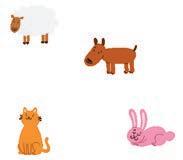

2 a Dan b Amy
c Sam is north-west of the teacher.
3 a Tran is at D3.
b Student writes Eva at A2, above Amy.
c The position must be on the same row as Sam.
d Teacher to check that the grid reference matches the position on the grid.
e Position will be either north-west of the teacher B3 or south-east of the teacher C2.
Independent practice
1 a west b B5
c
d Shortest route is west on Christchurch to the junction with Sea lion Parade. Northwest on Sea lion Parade to Nelson Way. West along Nelson Way to the Swim centre.
e False. It is SW of Jo’s house.
f Student draws it opposite Tran’s house on Tieke Way.
g G2
h Various routes are appropriate. For example, Route 1: South on Tieke. East on Nelson. South-east on Sea lion. East on Christchurch. South on Penguin to the school entrance.
Route 2: South on Tieke. East on Napier. South on Penguin to the school entrance.
2 a (1,1) b 150 m
3–4a
4 b Distance should be longer than a straight line that would link the places (5 km). Appropriate distance might be 6–8 km.
5 a–b See map above.
Extended practice
1 a E for 2 cm. SE for 2 cm. S for 2 cm. SW for 2 cm. W for 2 cm. NW for 2 cm.
b Teacher to check. Look for students who have correctly used compass directions to describe the movements required to construct the shape.
2 Practical activity. Students could be asked to share their maps with a peer or their teacher after partial completion to ensure that the map and tasks are progressing appropriately. Discussion about whether to use an informal scale or to use a formal unit (e.g. 1 cm = 1 km) might be useful.
Unit 9: Topic 1
Guided practice
1
2 & 3 Teacher to check. Look for students who can correctly identify a question that meets the requirements and who show an understanding of the types of questions that will elicit categorical and numerical answers. It may need to be reinforced to students that, if the answer to the survey question is a number, the data is numerical. If not, the data is categorical.
4 a numerical
Primary data e Answers will vary.
Independent practice
1 a Range is 16% to 80% = 64%.
b Range is 75 cm to 1.5 m = 75 cm or 0.75 m.
Extended practice
This page could form part of a cooperative group activity.
1 Answers will vary but might include “a”, “the” and “an”.
2 a–c Answers will vary depending on the texts used. Look for students who choose appropriate methods to tally the words used and who are able to draw conclusions supported by the data they have gathered.
3 a A: 18, E: 19, I: 10, O: 16, U: 3
b The sample was deliberately skewed to make sure the letter “u” was used infrequently. Students will hopefully conclude that it will be necessary to repeat the survey for the data to be trusted.
Unit 9: Topic 2
Guided practice
1 a $5 b Week 3
c Likely answer is $2, but students could be asked to justify other amounts (such as $2.20).
2 Answers may vary. This could be a useful discussion point for a group or the whole class. For example, “Do the two points on the star in week 4 indicate exactly $2?”
3
How much money was in my piggy bank?
Amount
Key: = 5 5678
Example: Graph to show Eva’s spelling scores during the term
2 a weeks 1, 7 & 8
b Teacher to check, e.g. the scores rose very sharply over the 2 weeks.
c Most likely answer is Week 5. Students could be asked to justify other responses.
d true (exact mean was 165 ÷ 10 = 16.5)
e weeks 5 & 6 (a rise of 10)
3 a 65
b 15
c 85
d Answers may vary, e.g. The sales were poor on Tuesday. They only sold 15 ice creams. Maybe it was a very cold day.
e 315
f $157.50
4 a Teacher to check, e.g. yes, the segments are the wrong sizes.
b Teacher to check.
Extended practice
1 a Player Total Average Sam 85 17 Amy 25 5 Tran 30 6 Eva 60 12 Lily 10 2 Noah 35 7
b Teacher to check. Students could be asked to discuss or write down how they intend to respond to the task. In this way, they are more likely to draw an appropriate graph. Look for students who can choose an appropriate way to display the data and who include all the information required for a data display, including scale or key and title.
c Sam d Noah
e Answers will vary. Look for students who show that they can interpret data to justify their responses, e.g. “Lily, because her scores were the lowest.”
Unit 10: Topic 1
Guided practice
1 Students could be asked to justify their response. The wording is deliberately ambiguous in places so that students will appreciate the need for numerical values to describe probability accurately. This is a possible discussion point for students. (See also question 3, below.)
Teacher to check that the scenarios given by students match the likely outcomes for E, H, I, J and K
A It is impossible to run 100 metres in two seconds
It is almost impossible for me to win ten million dollars.
C It is likely that I will see a movie at the weekend
D There is a better than even chance that I will like the movie.
E It is very likely that
F There is an even chance that the next baby born will be a girl.
G It is less than an even chance that I will go swimming tomorrow.
H It is almost certain that 0.9
I It is certain that 1
J It is very unlikely that 0.2
K It is unlikely that 0.3
2 Number lines should match the table in question 1:
7 Answers could vary, but the predicted outcome is likely to be:
a 20 red (20%) b 80 blue (80%)
8 1 4
Extended practice
1 a 1 4 b red or black
c 16 52 (or equivalent) d 5 ( 1 4 of 20)
2 a red: 4 sectors, green: 3 sectors, blue: 2 sectors, gold (yellow): 1 sector b red: 4 10 , 0.4 green: 3 10, 0.3 blue: 2 10 , 0.2 gold (yellow): 1 10 , 0.1
3 a 1 5 (or equivalent) b white
c 3 10 (or equivalent) d black
FINAL
1 Teachers may ask students to justify answers other than the following:
a even chance b impossible
c likely d certain
2 “Likely” and “unlikely” could be placed elsewhere. Teachers to use their professional judgement.
3 Teacher to check response. (See question 1, above)
4 a B b D c C d A
5 Shading should be as follows: Yellow: 1 sector White: No sectors Blue: 2 sectors Green: 4 sectors Red: 3 sectors
6 a E, A, C, D, B
b Number value could be as a decimal, a fraction or a percentage (or a mixture of these). Probable answers are:
Spinner A: one-eighth or one out of eight
Spinner B: one-third or one out of three Spinner C: one-sixth or one out of six
Spinner D: one-fifth, one out of five, 0.2 or 20%
Spinner E: one-tenth, one out of ten, 0.1 or 10%
Unit 10: Topic 2
Guided practice
1 50%
2 Depending on the level of prior knowledge, students could predict five on each. Others may reflect on this being a “chance” situation and offer different possibilities. Discussion should lead to students concluding that an accurate prediction is not possible.
As students compare the results and predictions, they will hopefully conclude that the coins landed in a particular way by chance. Students could combine their results to see if the grand total came anywhere nearer the expected norm.
3 a One in six or one out of six or 1 6 (or any equivalent value)
b 1 out of 6 (or the same as above)
4 See question 2, above. Students might conclude that the higher number of possible outcomes (six) made the task more difficult this time.
Independent practice
1 a 3 4, 3 out of 4, 75%, 0.75 b Answers may vary. Having completed the activities on the previous page, students will probably conclude that, although each number has an equal chance, the spinner will probably not land once on each number because of the element of chance.
2–3 Answers will vary. Teachers may wish to discuss with students whether a higher number of attempts may bring about results closer to those expected by the level of probability. Look for students who can accurately conduct the experiment and describe their results using the language of chance.
4 The chance of landing on a 5 would become zero, while the chance of landing on a 4 increases to 2 in 5. This could be carried out as a practical activity or could be the basis for discussion. Students could be asked to work cooperatively. In addition to noticing that the number 4 has a greater chance, students might be expected to conclude that, as there are five possible outcomes, the numbers 1, 2 and 3 each have a 1 in 5 chance, but the number 4 has a 2 in 5 chance.
5 When you toss two coins the result can be:
They both land on heads. They both land on tails. One lands on heads and the other on tails.
6 Answers will vary. There is twice the chance of getting heads and tails as there are two ways for the coins to land like that. (Heads on one and tails on the other, or tails on one and heads on the other.) There is only one way to get two heads and one way to get two tails. There is, therefore, twice the chance of the coins landing on a head and a tail. Whatever the student’s predictions for each, the totals should be 40.
7–8 Practical activity. See notes above about the element of chance. Look for students who are able to conduct the experiment accurately and who demonstrate an understanding of chance by the conclusions they draw. Were their predictions accurate? Why or why not?
9 See note in question 6, above. There is a 2 in 4 (50%) chance of the coins landing as heads and tails; a 1 in 4 (25%) chance for two heads and for two tails.
Extended practice
1 Answers could include: 90%, 9 10 , 0.9, 9 in 10.
2 About 15%. Look for students who work out the answer by a process of elimination if they do not know how to convert a fraction to a decimal. 25% (and therefore 50% and 75%) are too high because 25% is the same as 1 in 4. That leaves 5% or 15%.
5 × 20 = 100, so it cannot be 5%. 15% × 6 = 90% and that is the closest to 100%.
3 1 6
4 a 3 7 (or equivalent value)
b 2 5
c There are eight different possibilities if each different letter is counted once only:
M & M, M & I, M & N, M & U I & I I & U, I & N N & U
There are 21 possibilities if counting 3 × M and 2 × I:
M1 & M2 M1 & M3 M2 & M3
M1 & I1 M2 & I1 M3 & I1
M1 & I2 M2 & I2 M3 & I2
M1 & N M2 & N M3 & N
M1 & U M2 & U M3 & U
I1 & I2 I1 & N I2 & N
I1 & U I2 & U N & U
5 Answers will vary and students could be asked to justify their responses. However, according to the levels of probability, the letter M ( 3 7 of the word) would be expected to appear 18 times, the letter I ( 2 7 of the word) 12 times and the letters N and U ( 1 7 of the word) 6 times each.
Working space
Working space
Oxford University Press is a department of the University of Oxford. It furthers the University’s objective of excellence in research, scholarship and education by publishing worldwide. Oxford is a registered trademark of Oxford University Press in the UK and in certain other countries.
Published in Australia by Oxford University Press
Level 8, 737 Bourke Street, Docklands, Victoria 3008, Australia
© Oxford University Press 2025
The moral rights of the author have been asserted.
First published 2025
First edition
All rights reserved. No part of this publication may be reproduced, stored in a retrieval system, transmitted, used for text and data mining, or used for training artificial intelligence, in any form or by any means, without the prior permission in writing of Oxford University Press, or as expressly permitted by law, by licence, or under terms agreed with the reprographics rights organisation. Enquiries concerning reproduction outside the scope of the above should be sent to the Rights Department, Oxford University Press, at the address above.
You must not circulate this work in any other form and you must impose this same condition on any acquirer.
ISBN 9780190351045
Reproduction and communication for educational purposes
The New Zealand Copyright Act 1994 (the Act) allows educational institutions that are covered by remuneration arrangements with Copyright Licensing New Zealand to reproduce and communicate certain material for educational purposes. For more information, see copyright.co.nz.
Illustrated by Barbara Bakos
Typeset by Newgen KnowledgeWorks Pvt. Ltd., Chennai, India
Proofread by Julie Cantrill
Printed in New Zealand by Webstar
Oxford University Press Australia & New Zealand is committed to sourcing paper responsibly.
Disclaimer
Links to third party websites are provided by Oxford in good faith and for information only. Oxford disclaims any responsibility for the materials contained in any third party website referenced in this work.
Acknowledgements
Cover: Neil Farrin/Alamy Stock Photo.
Internal illustrations of the cover animal copyright © Katherine Quinn 2025
